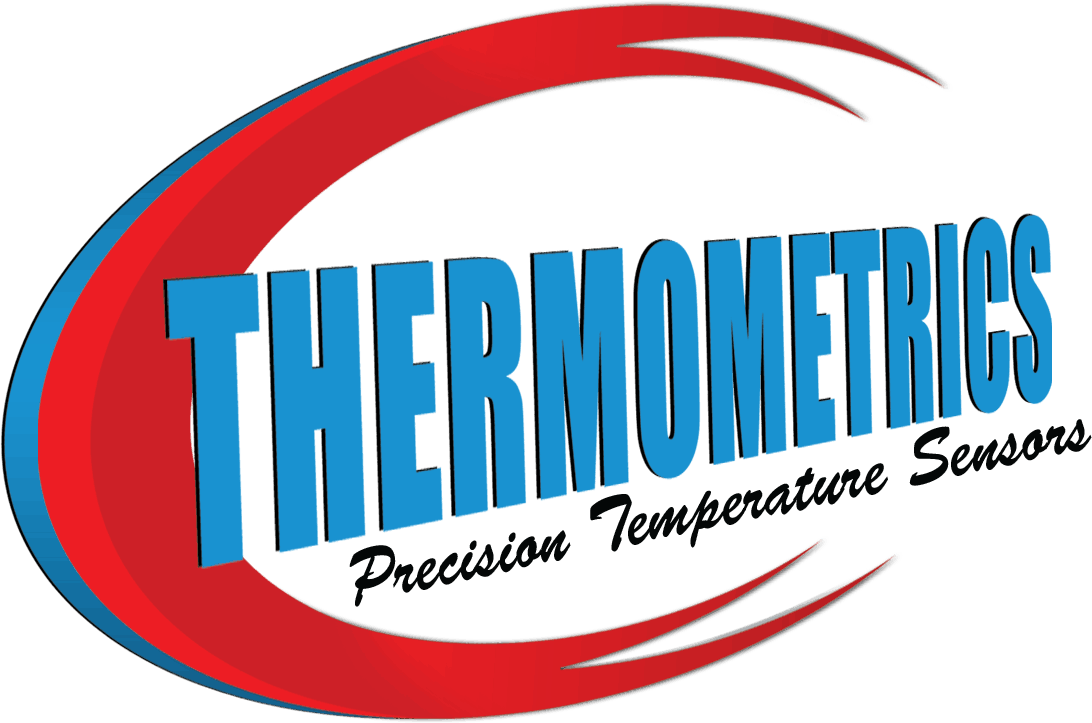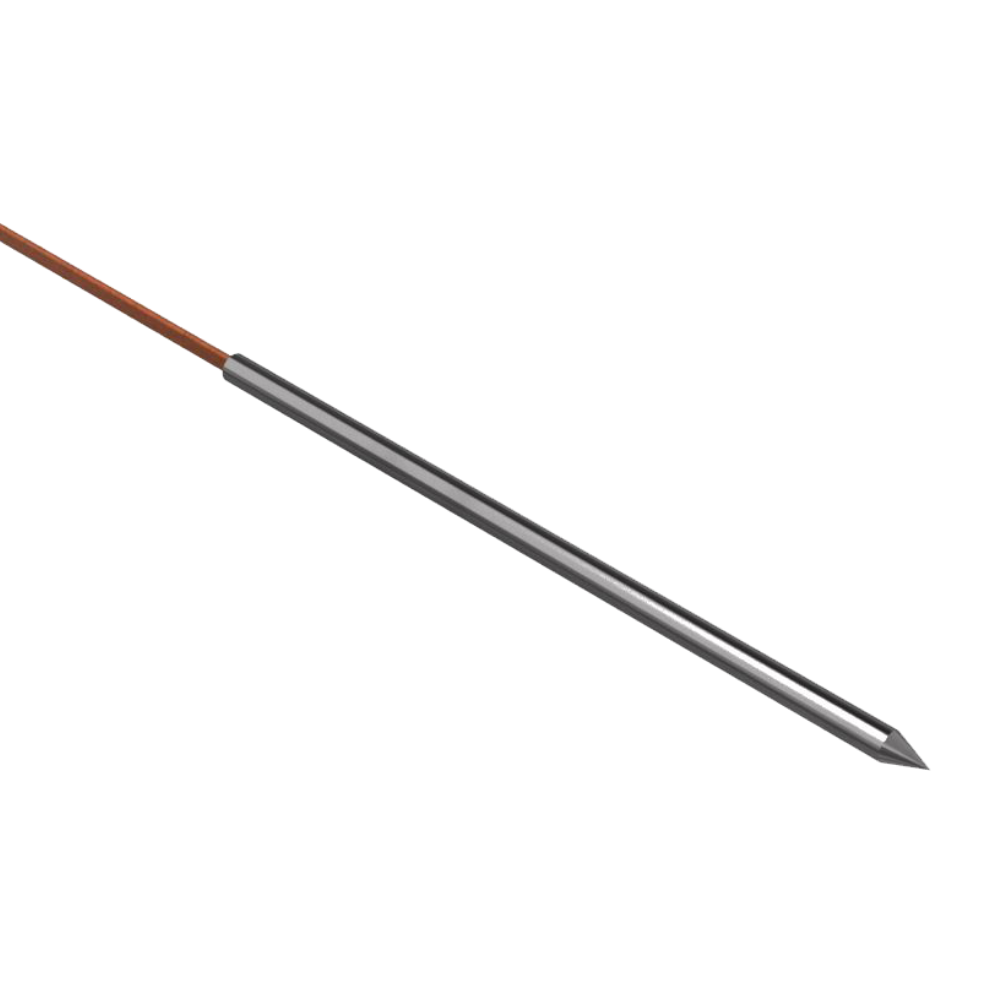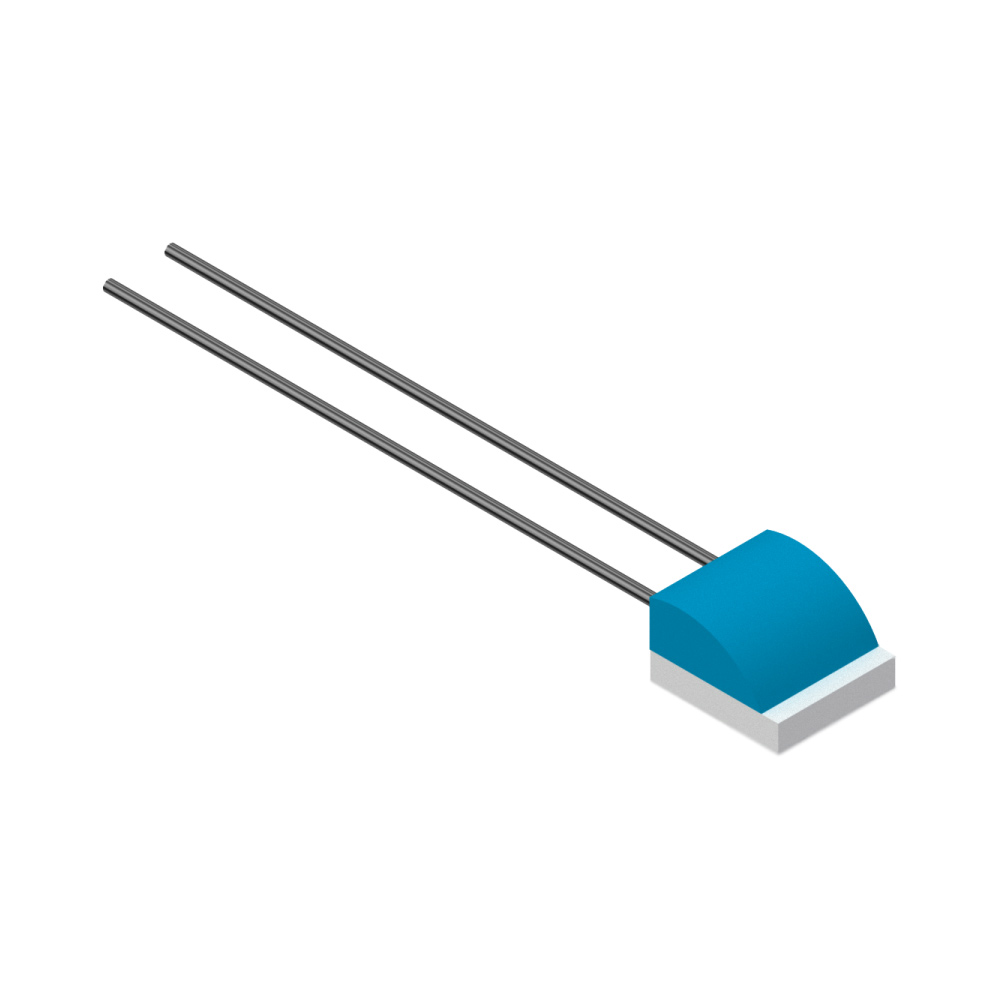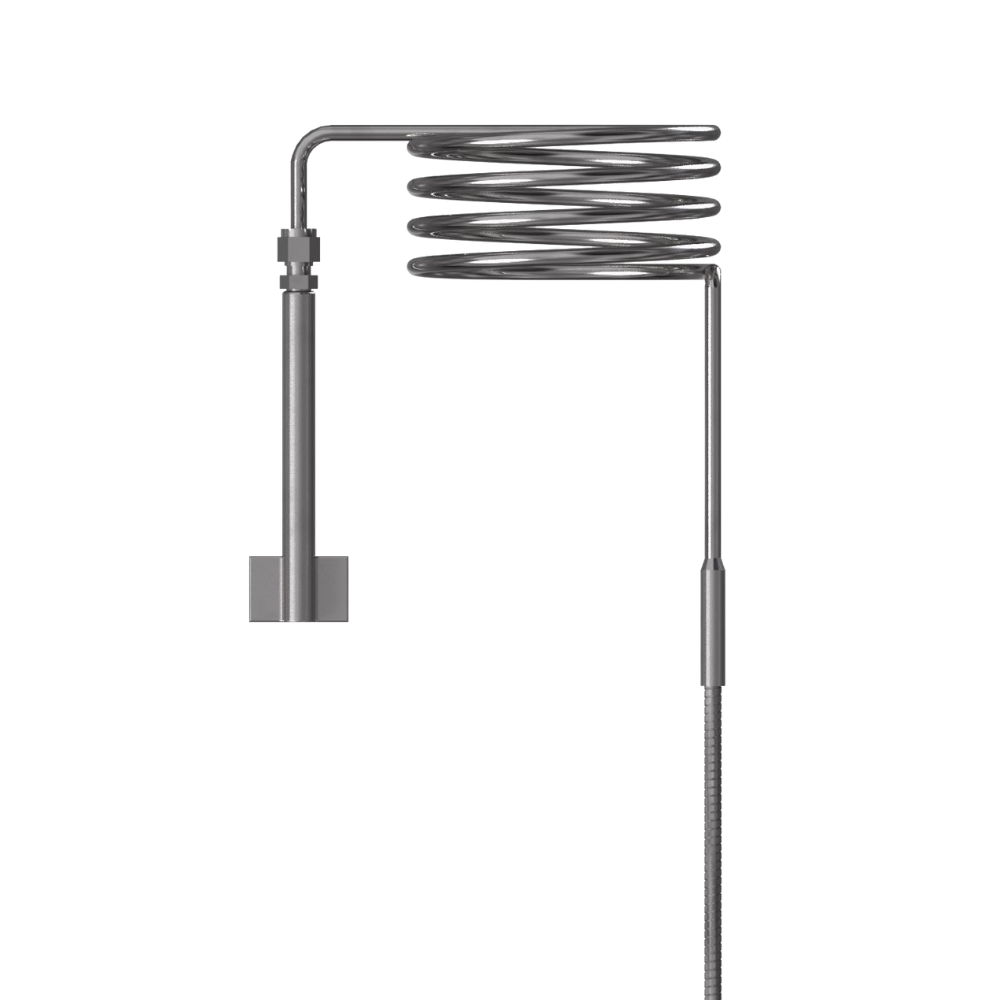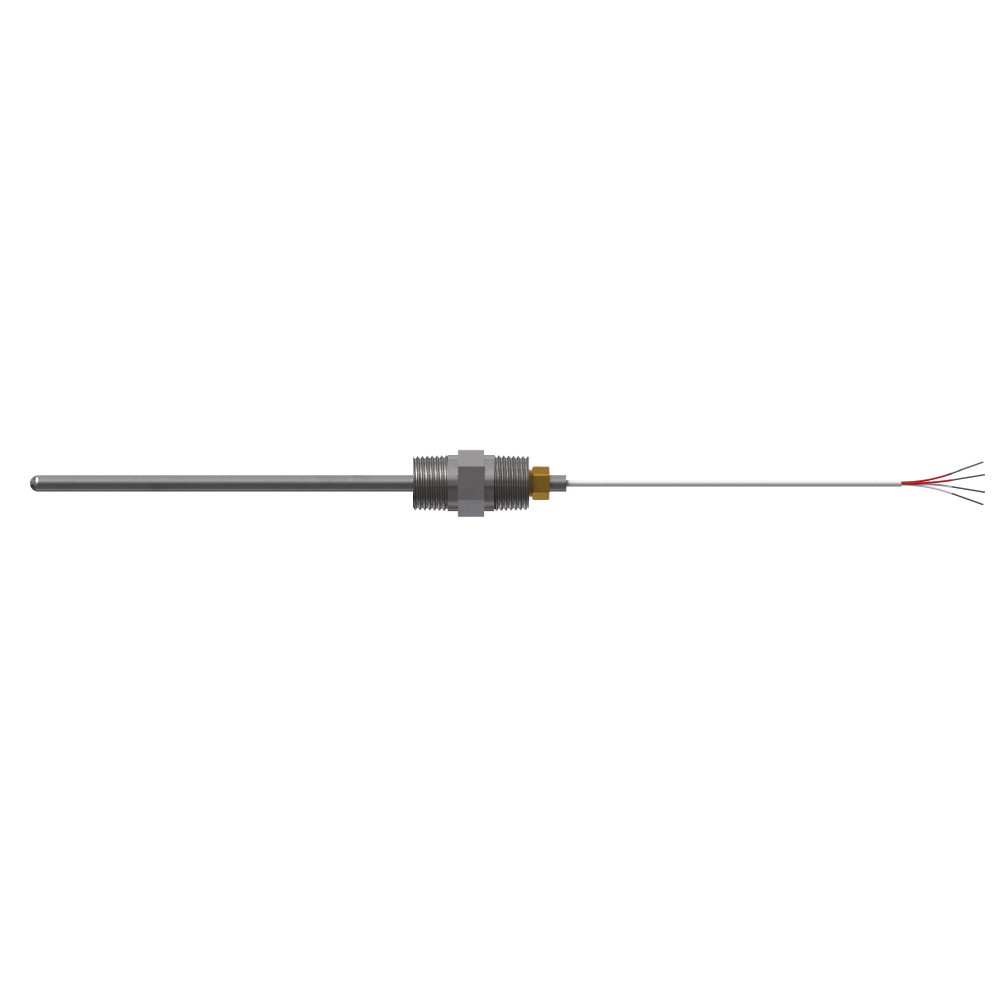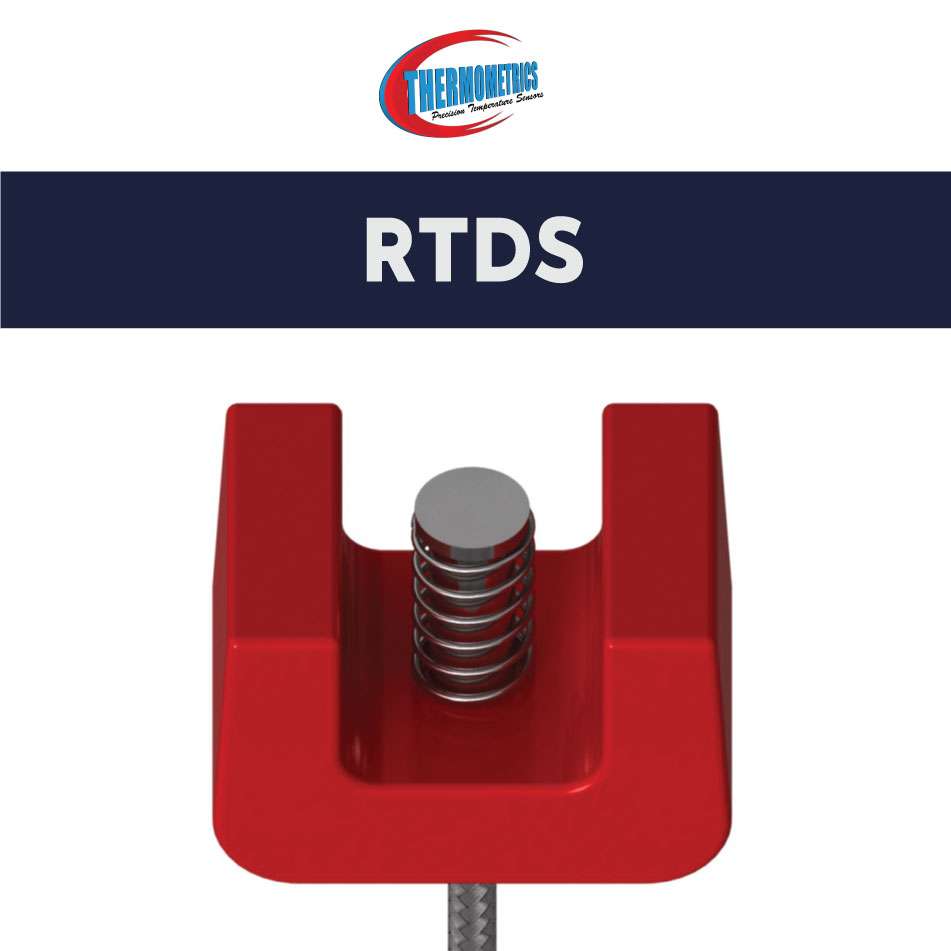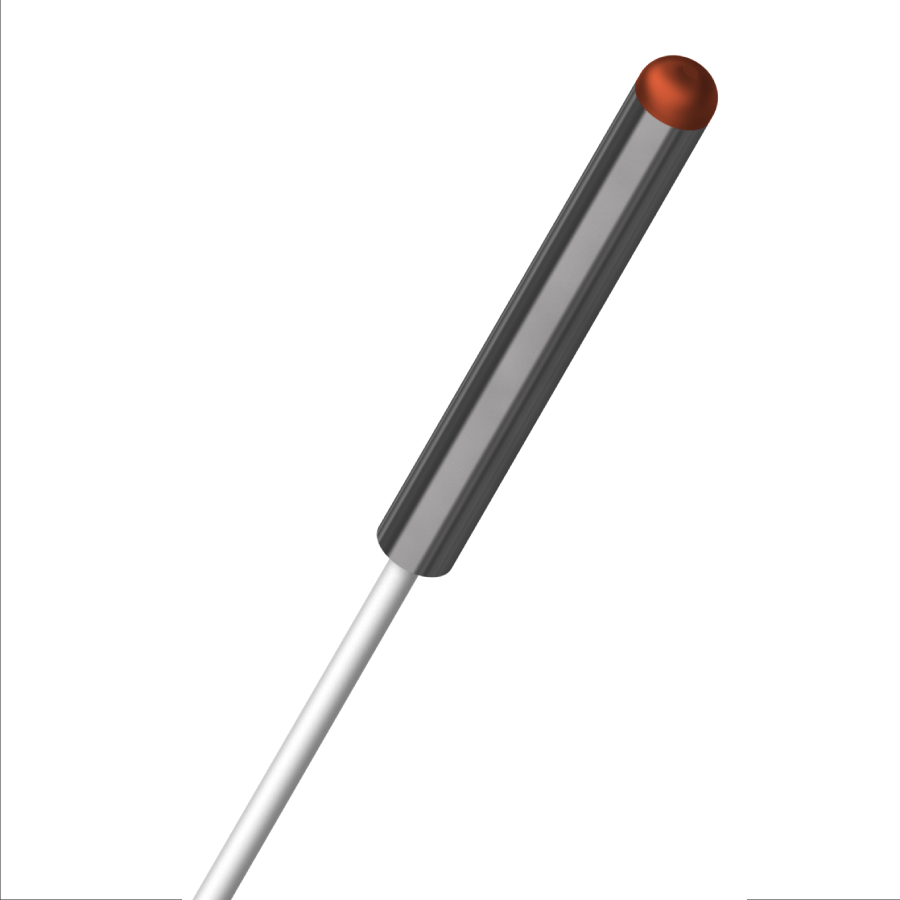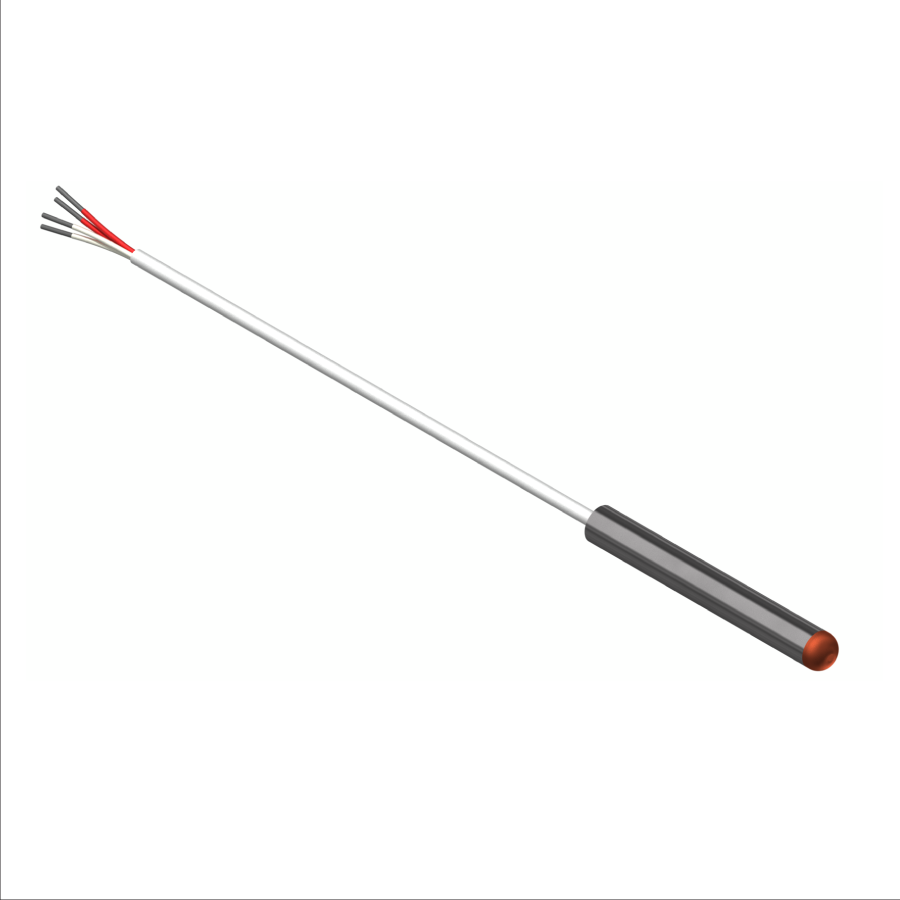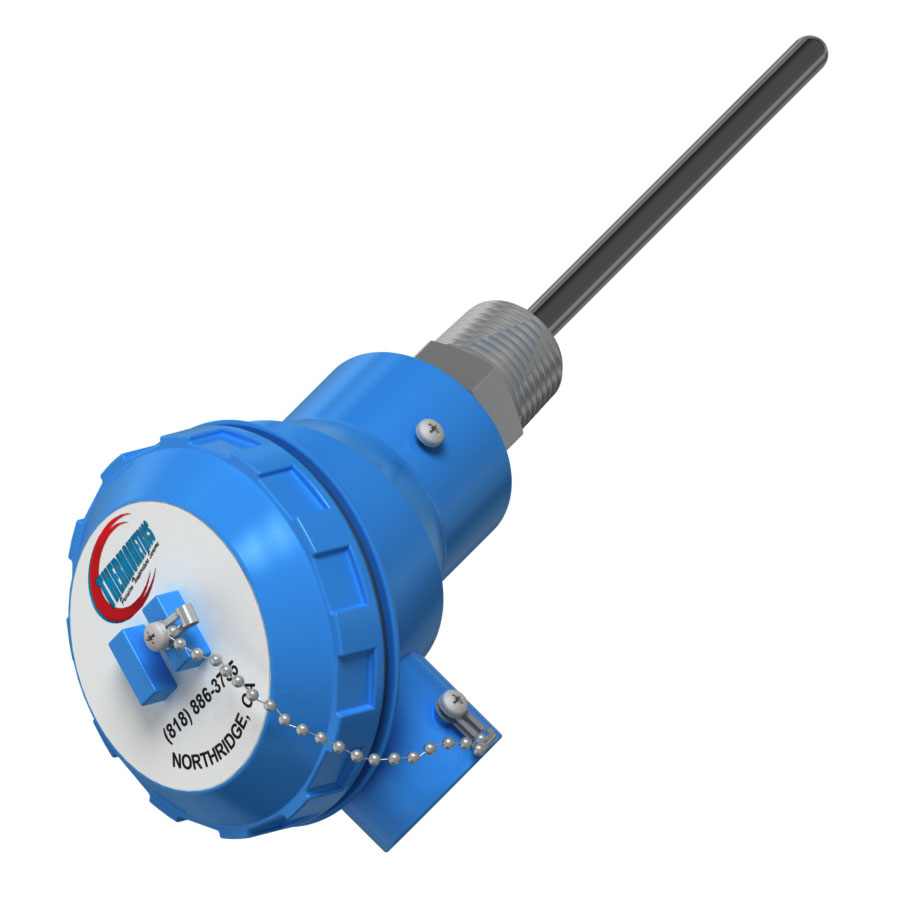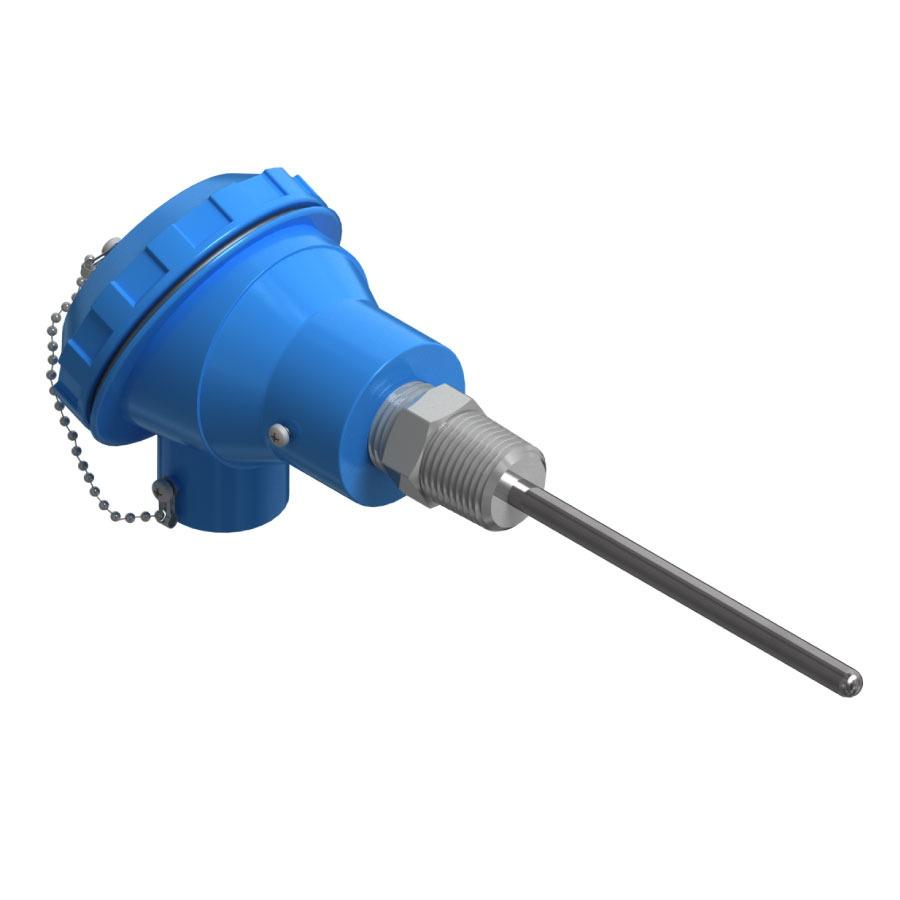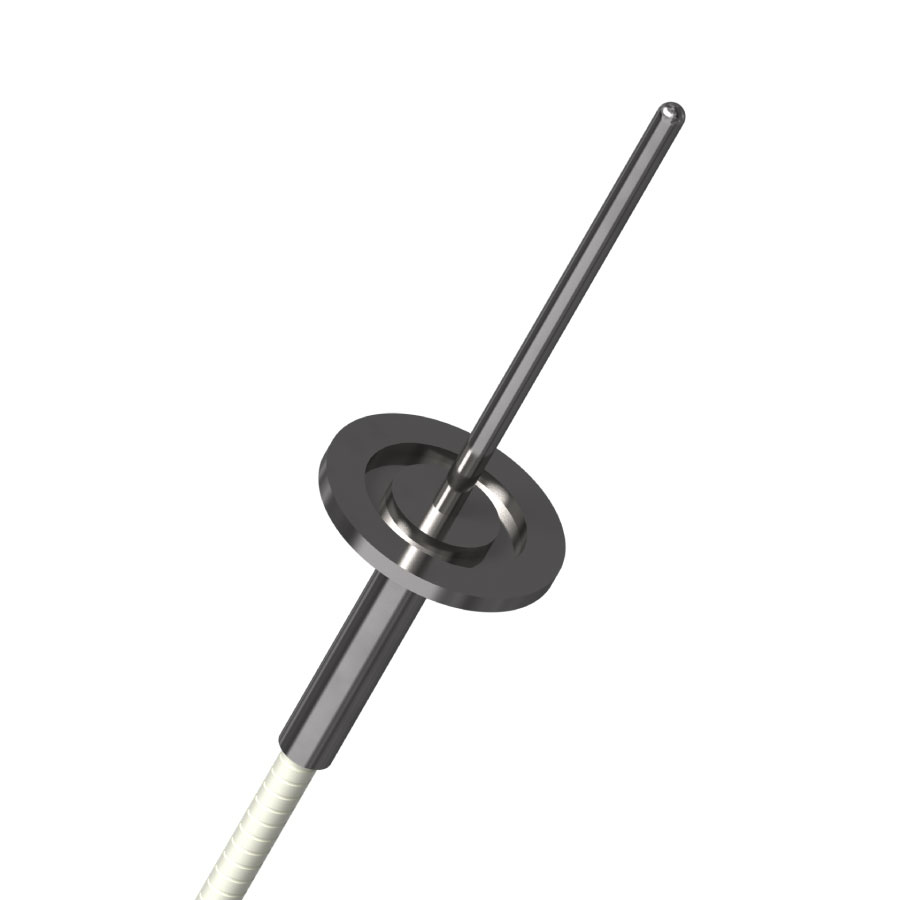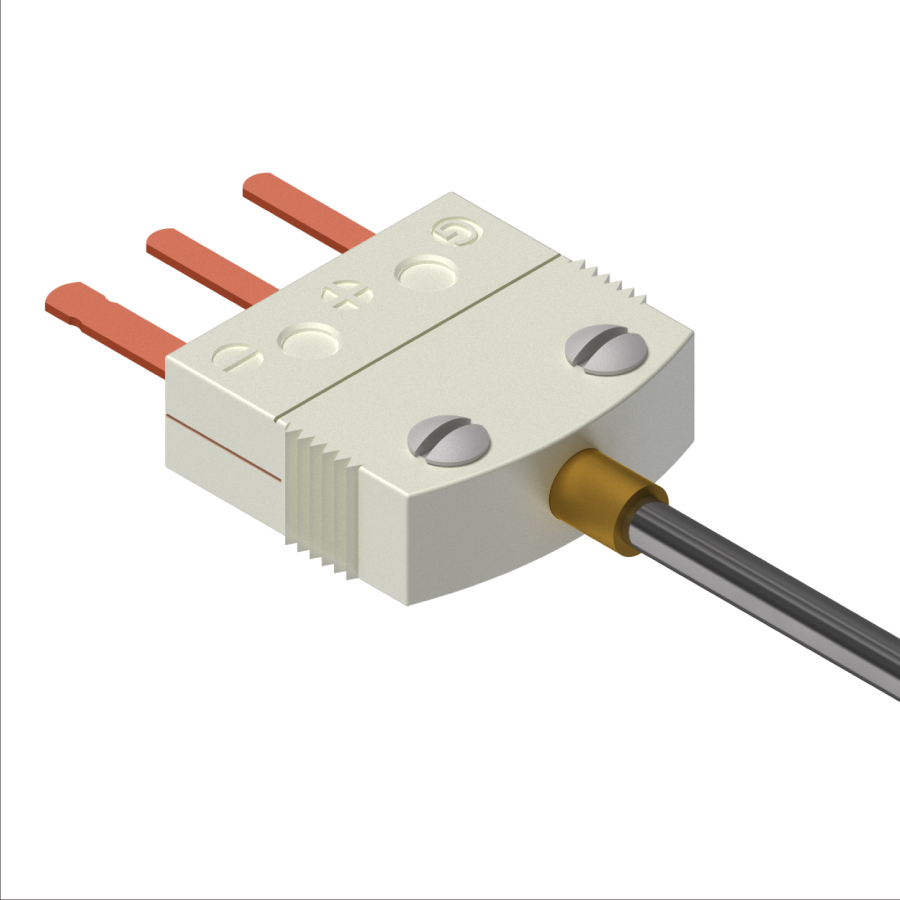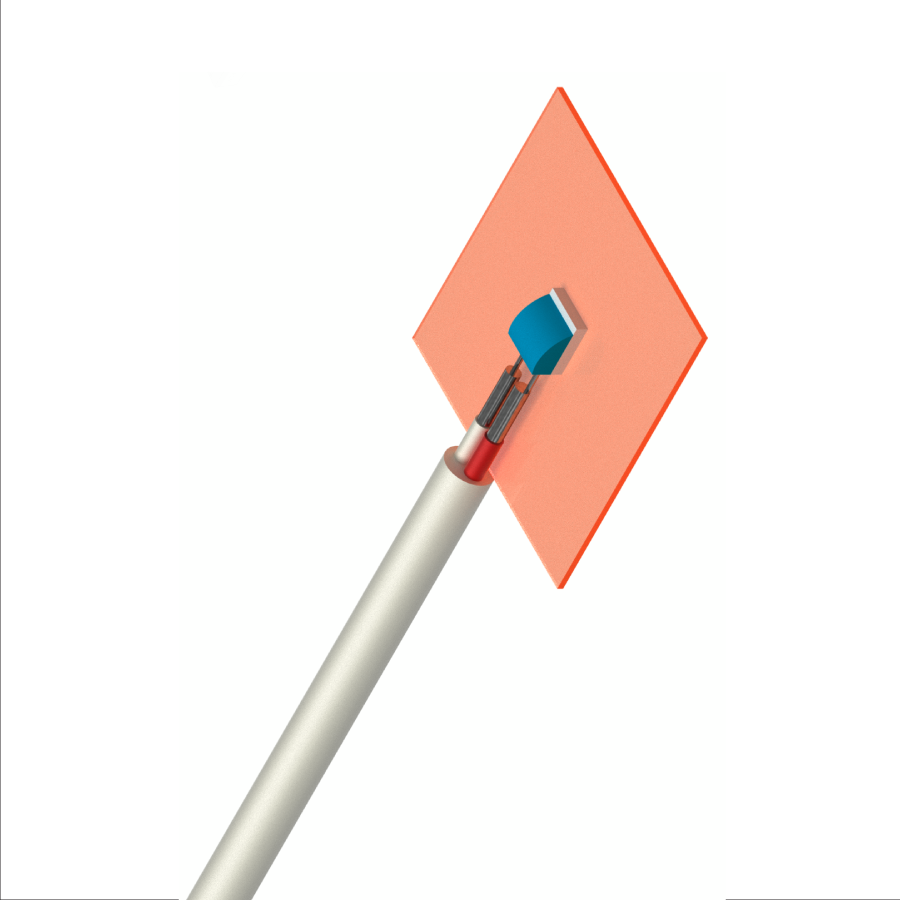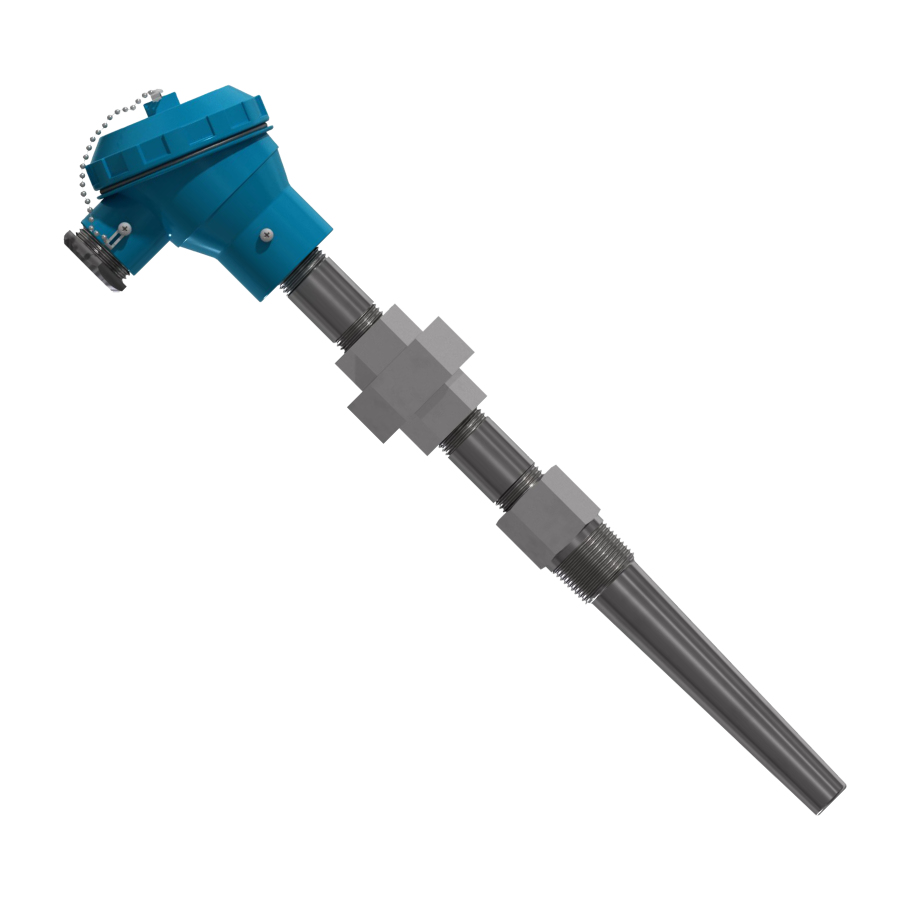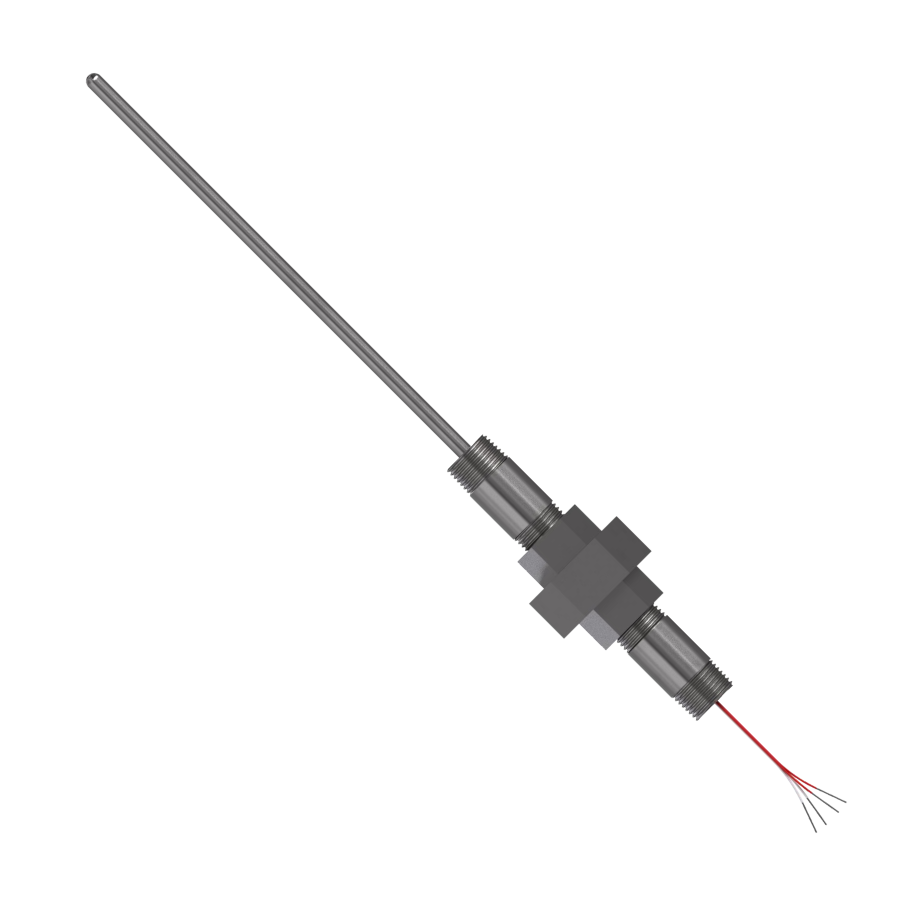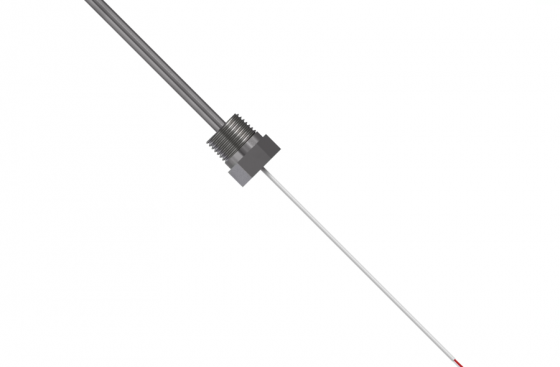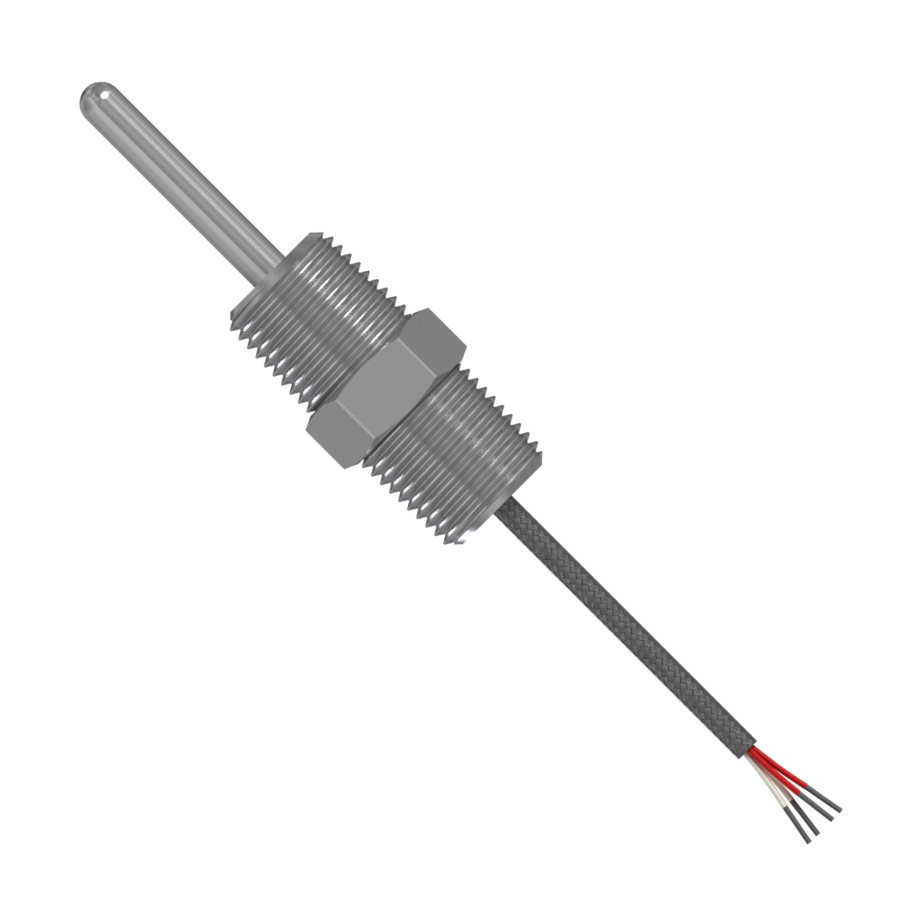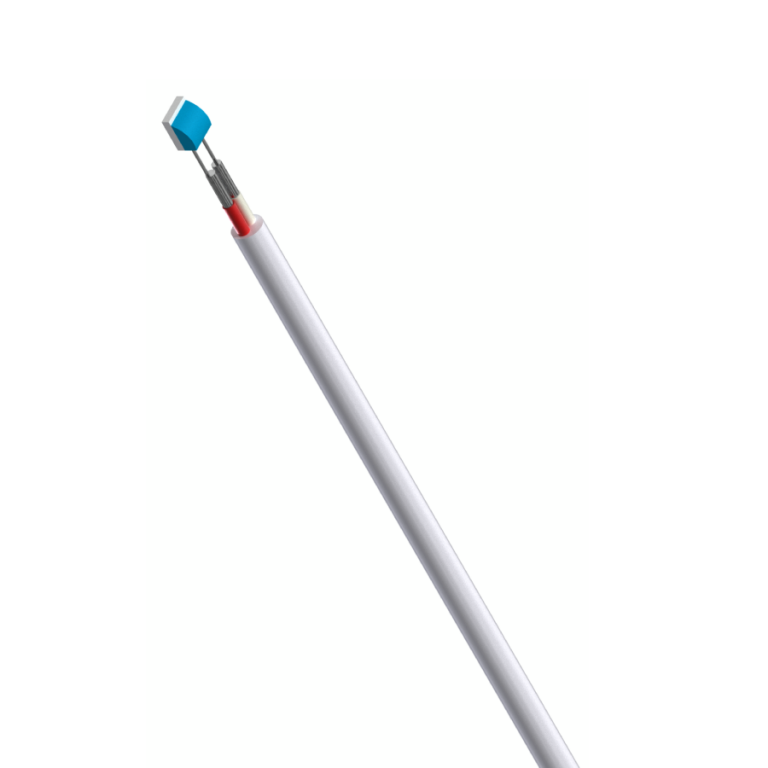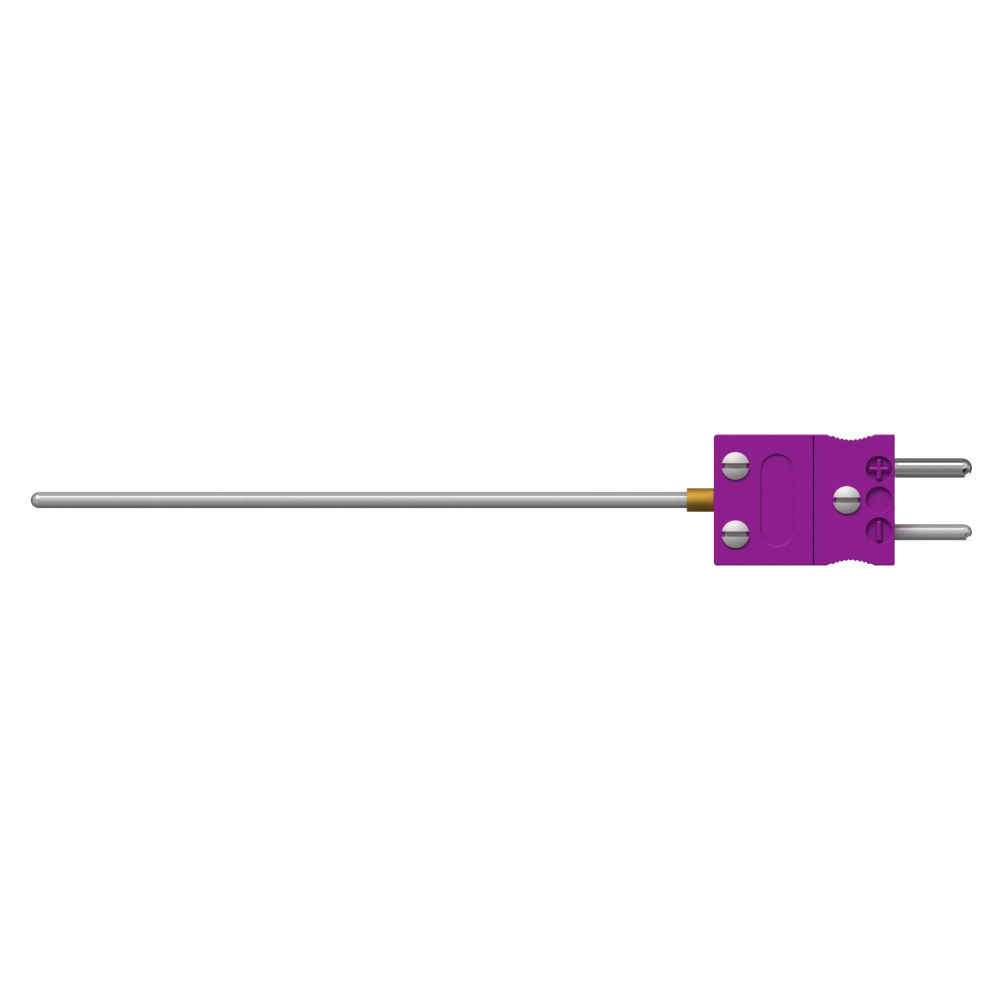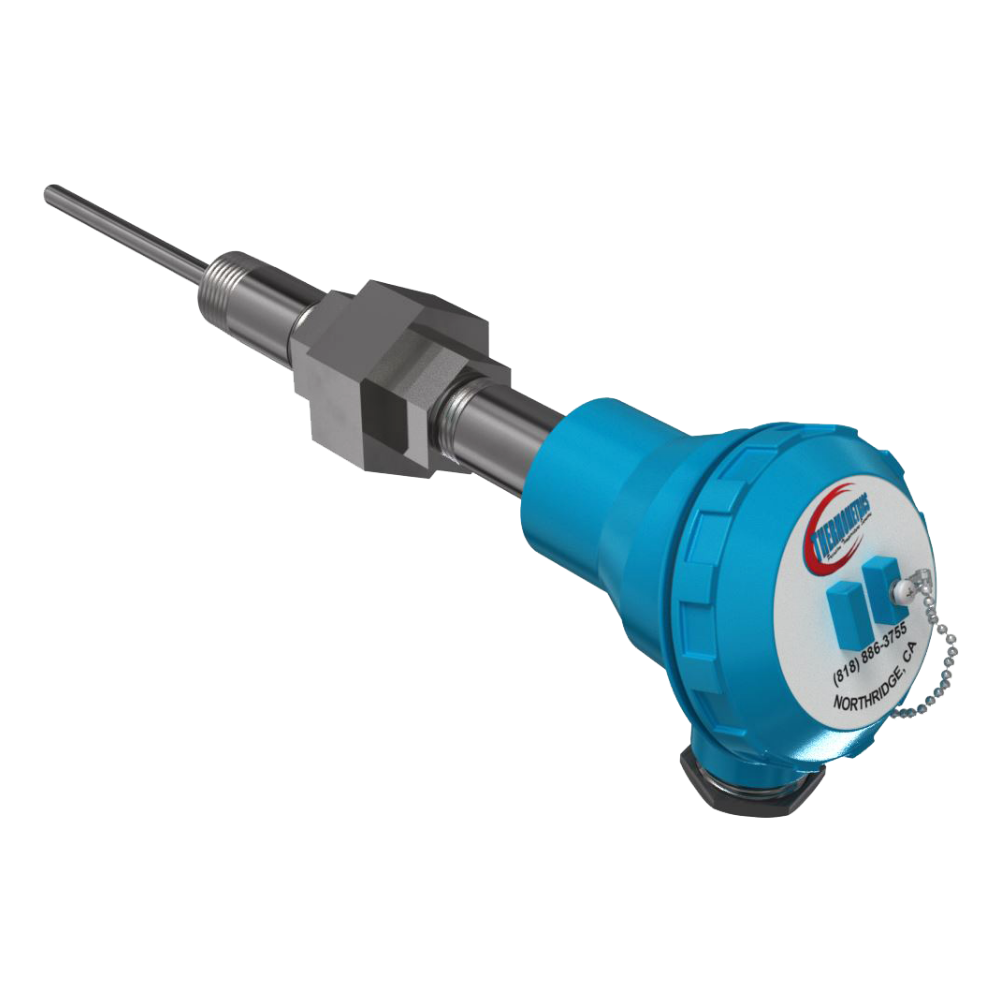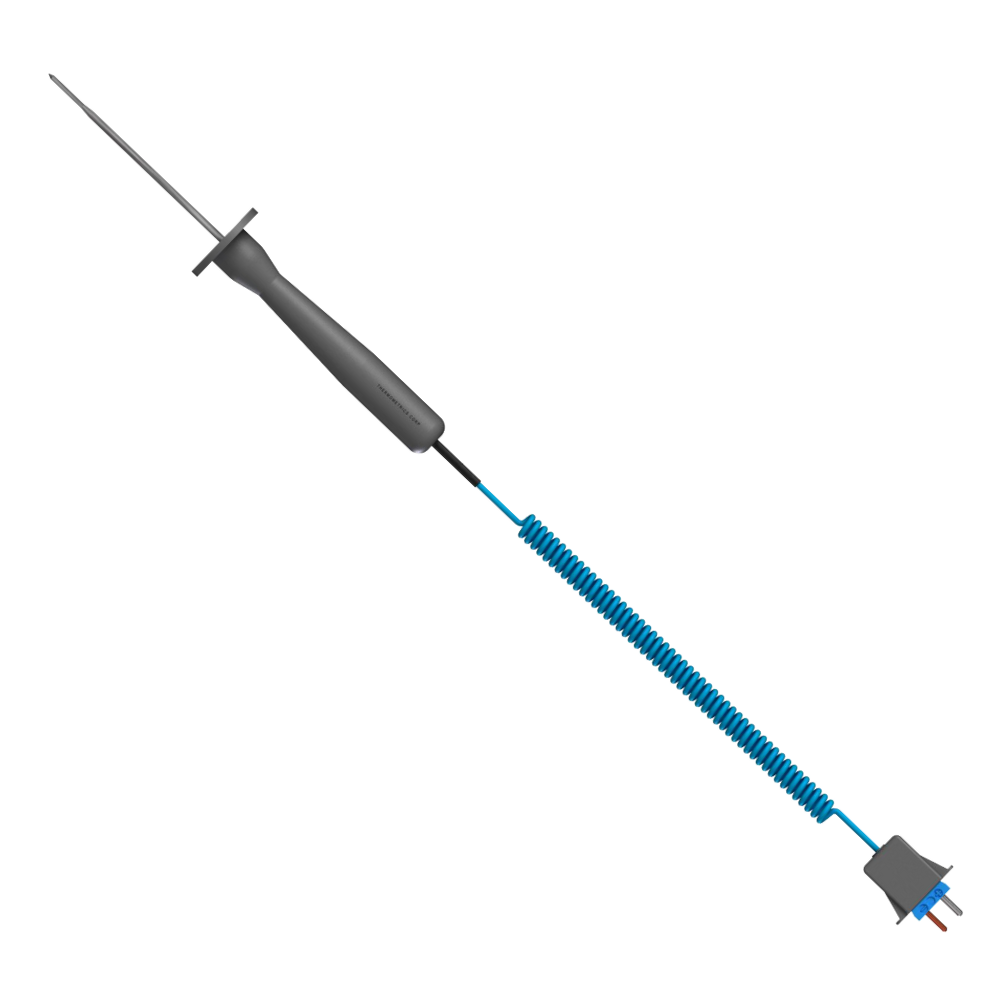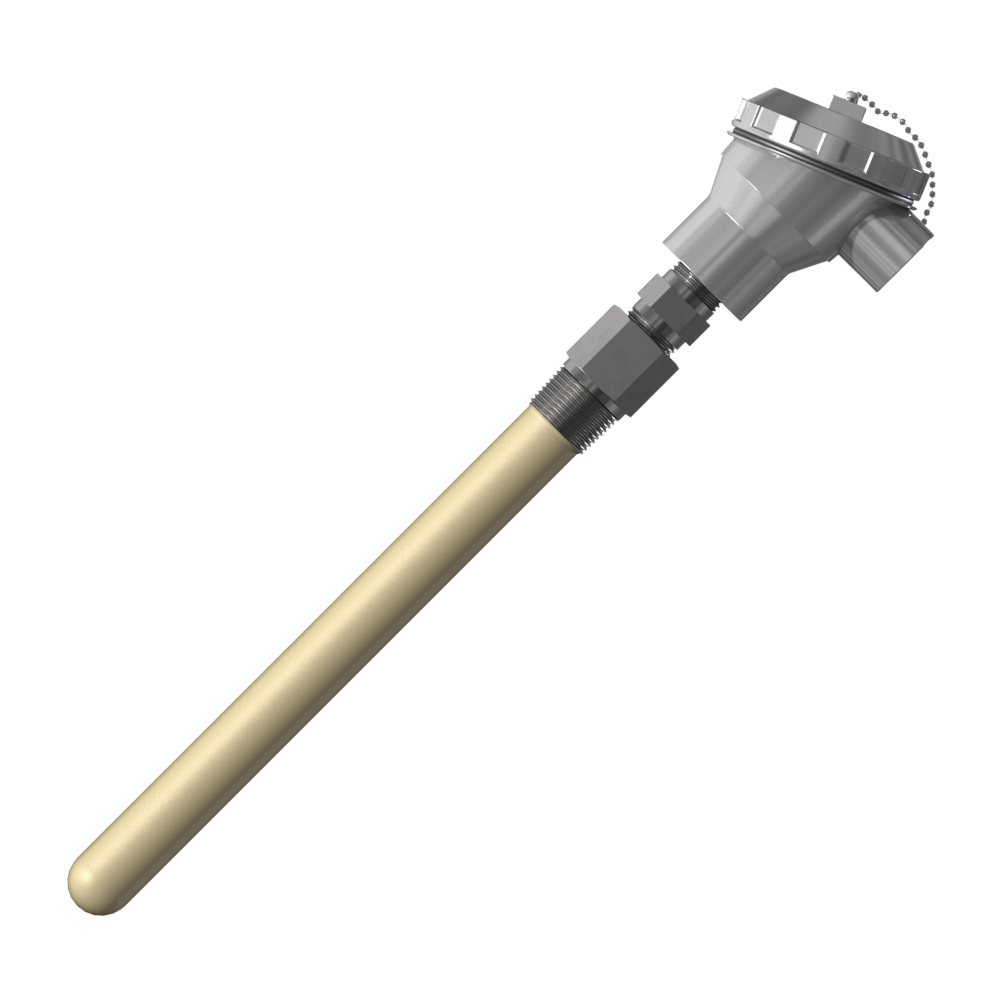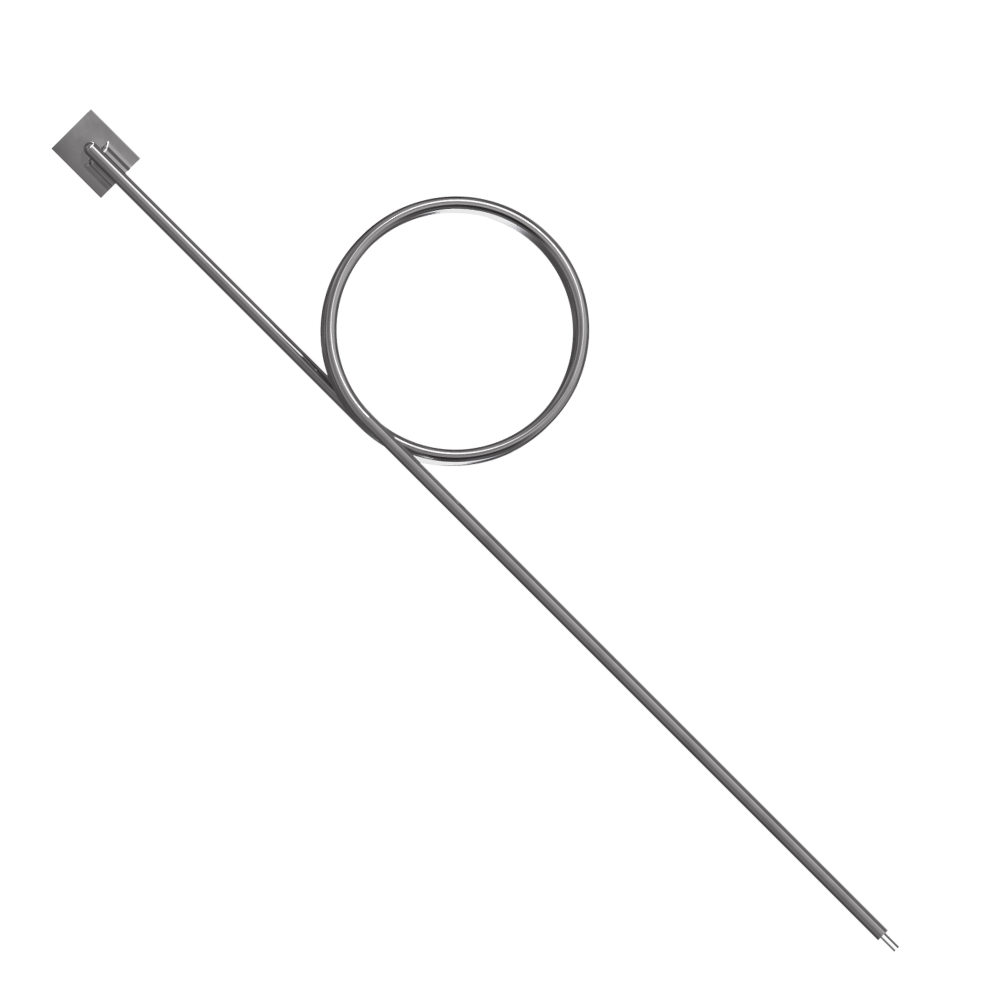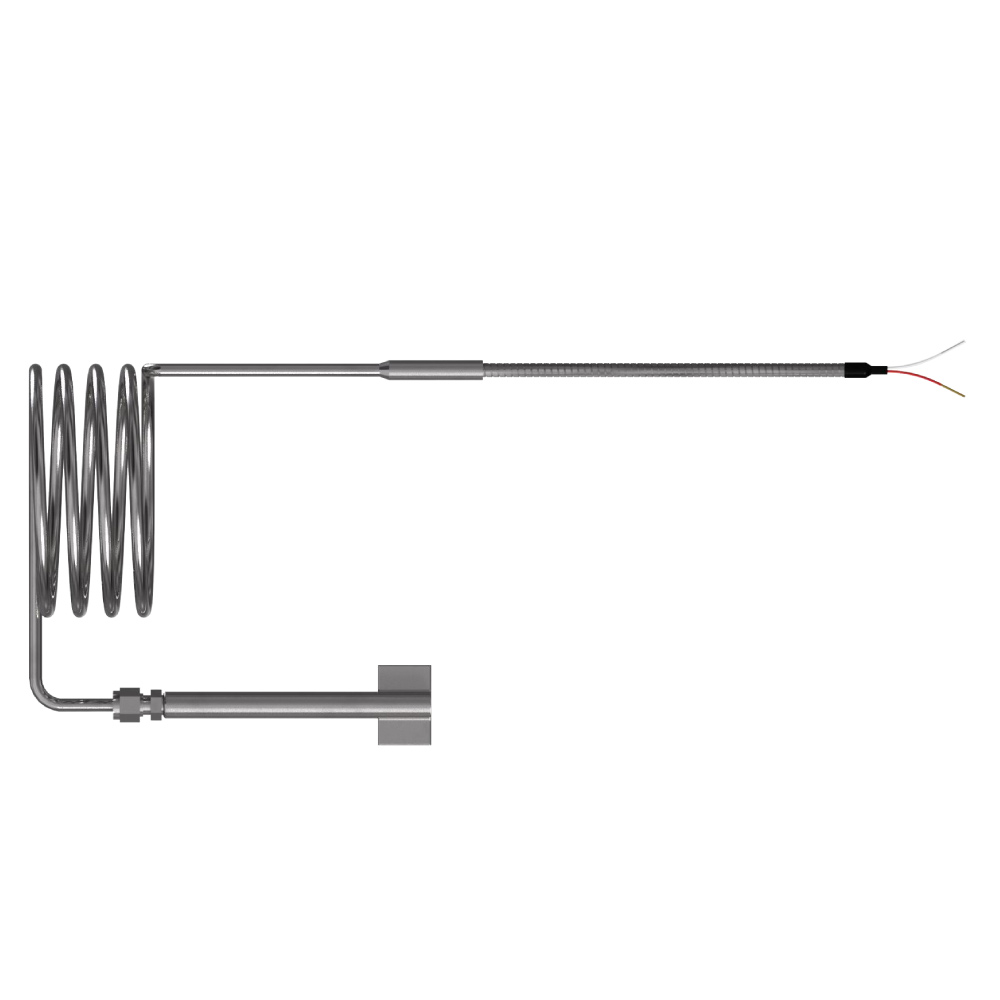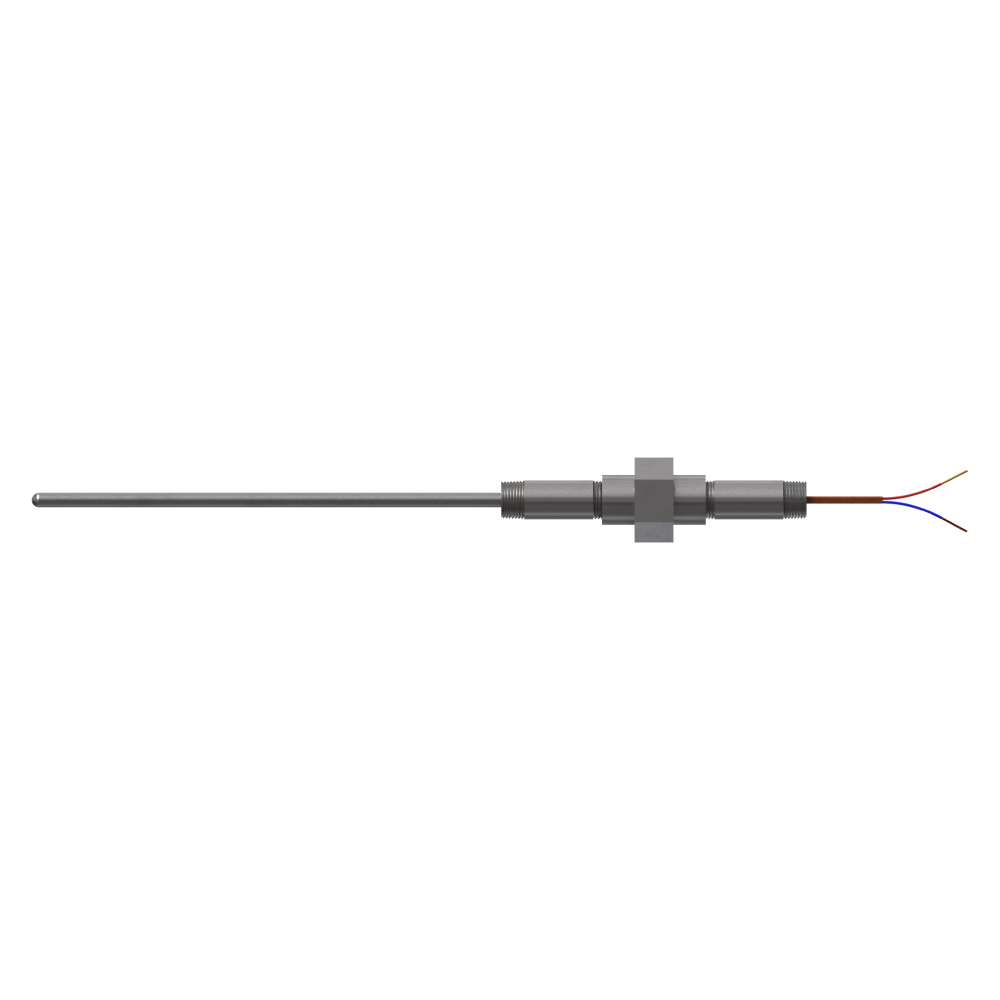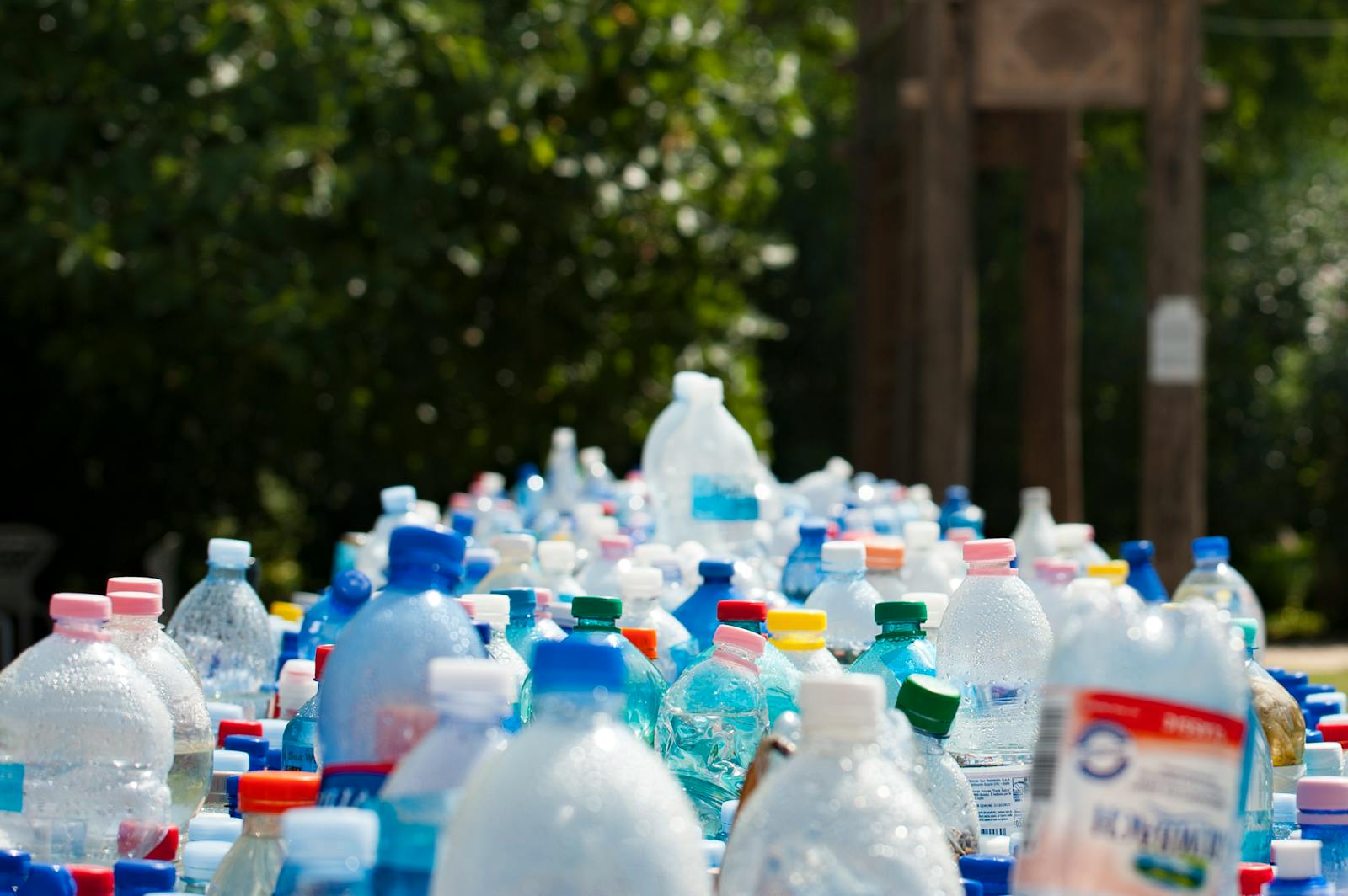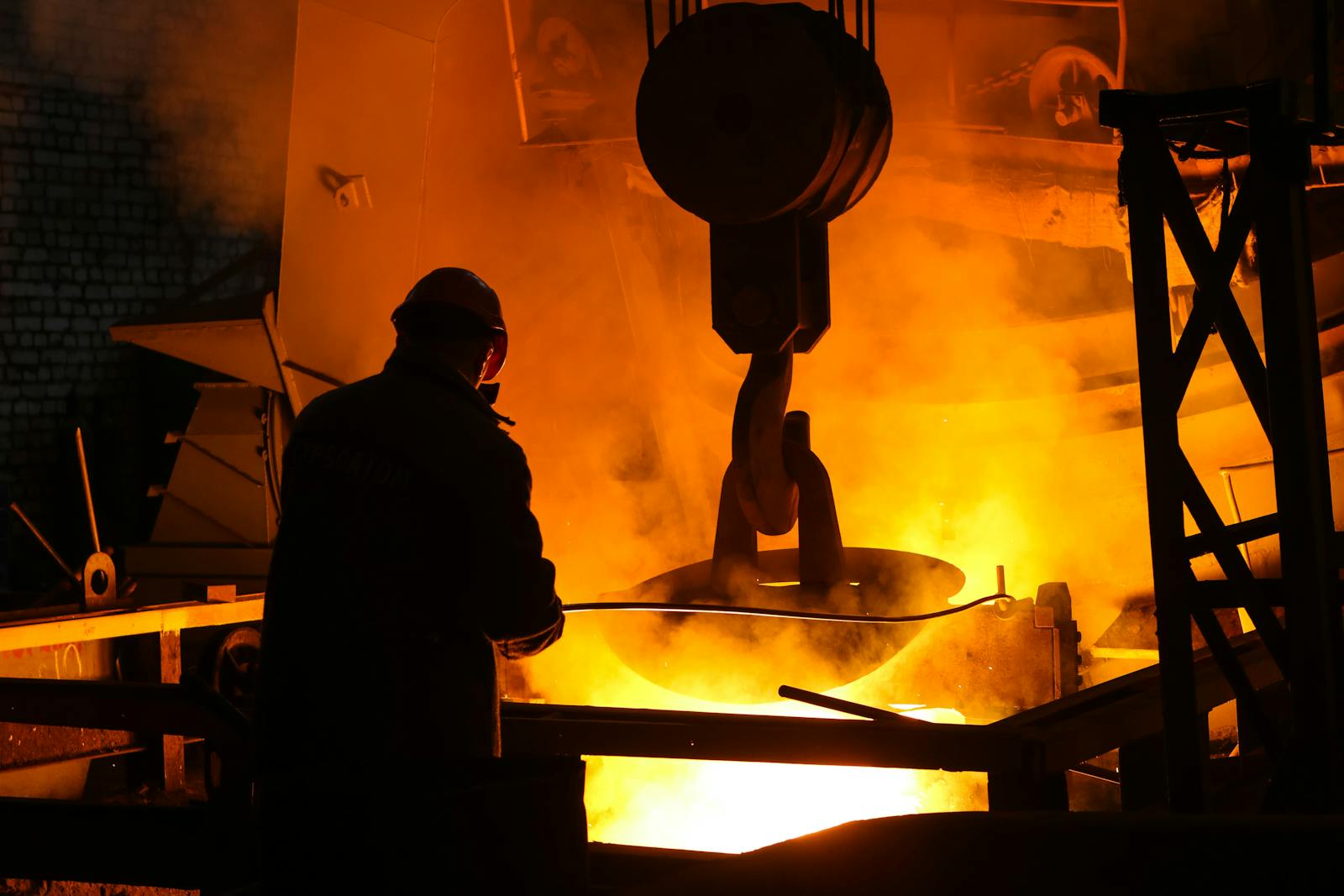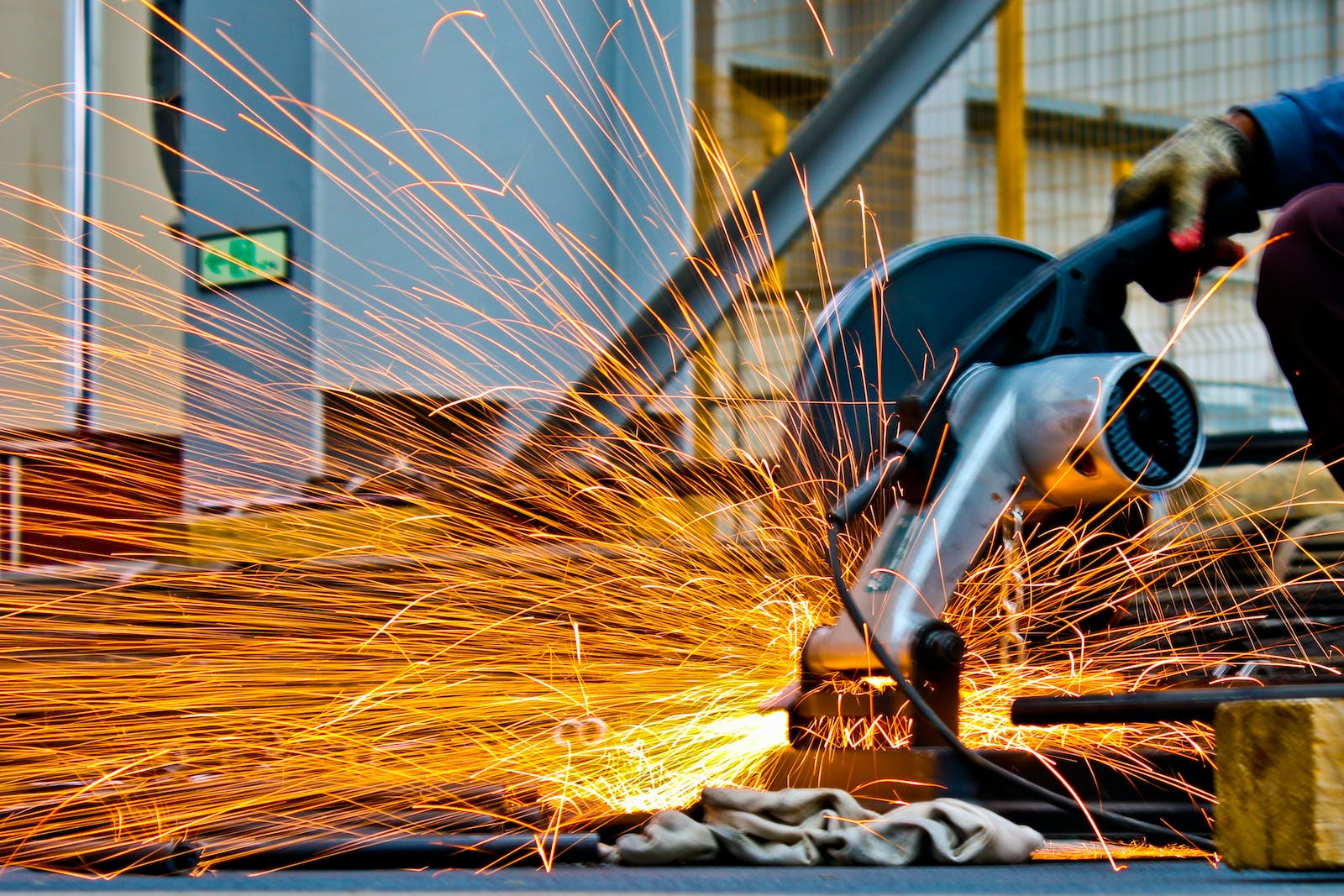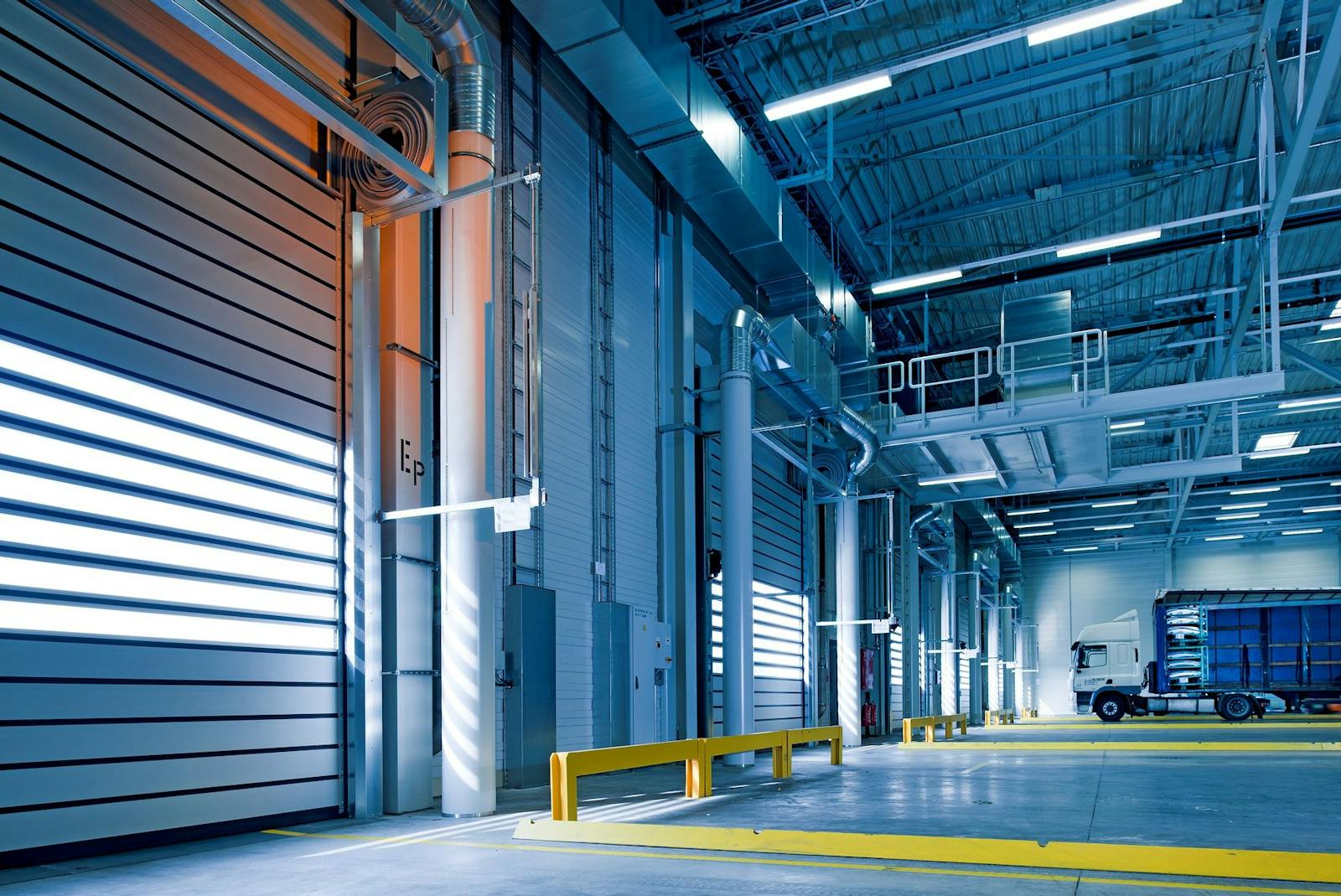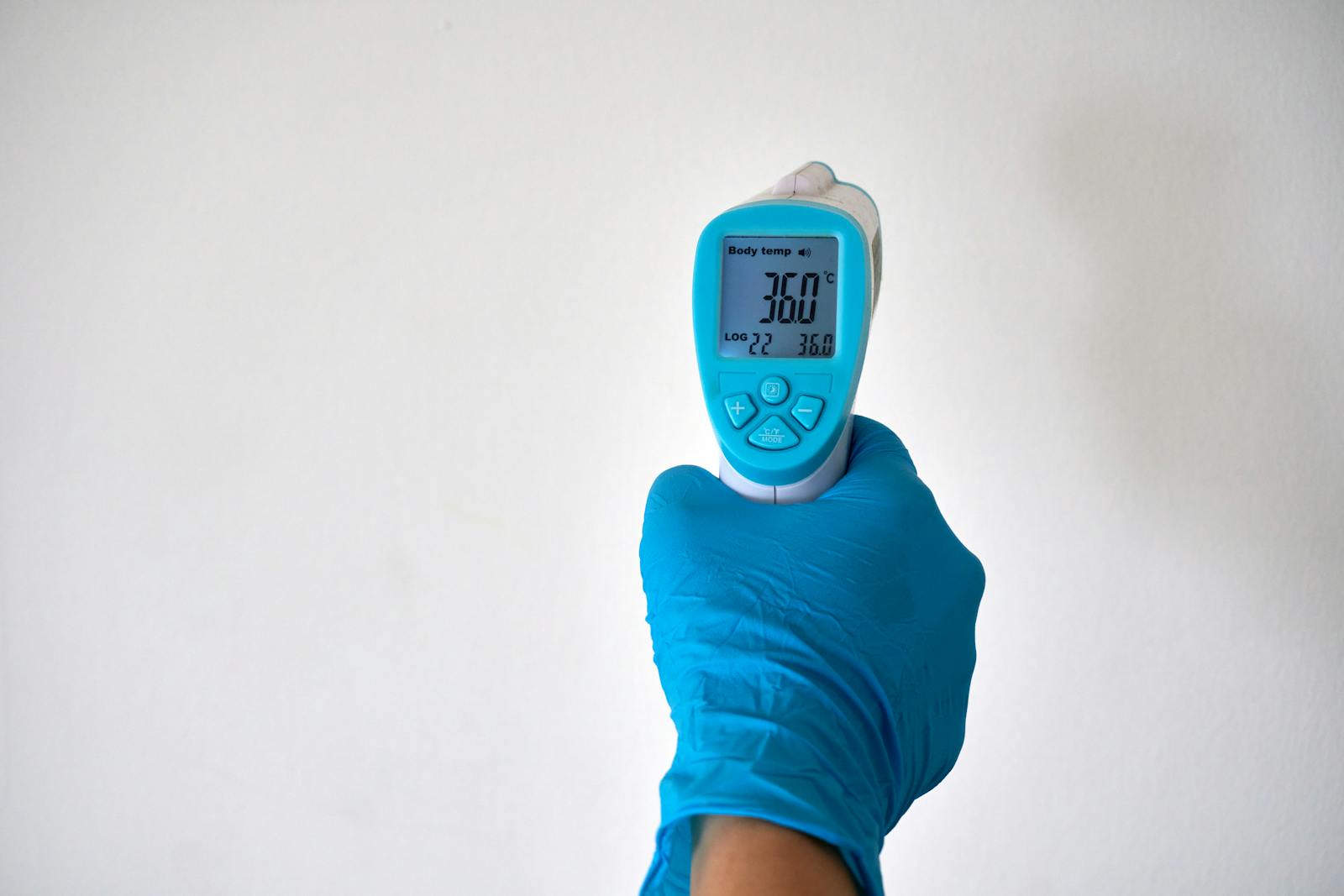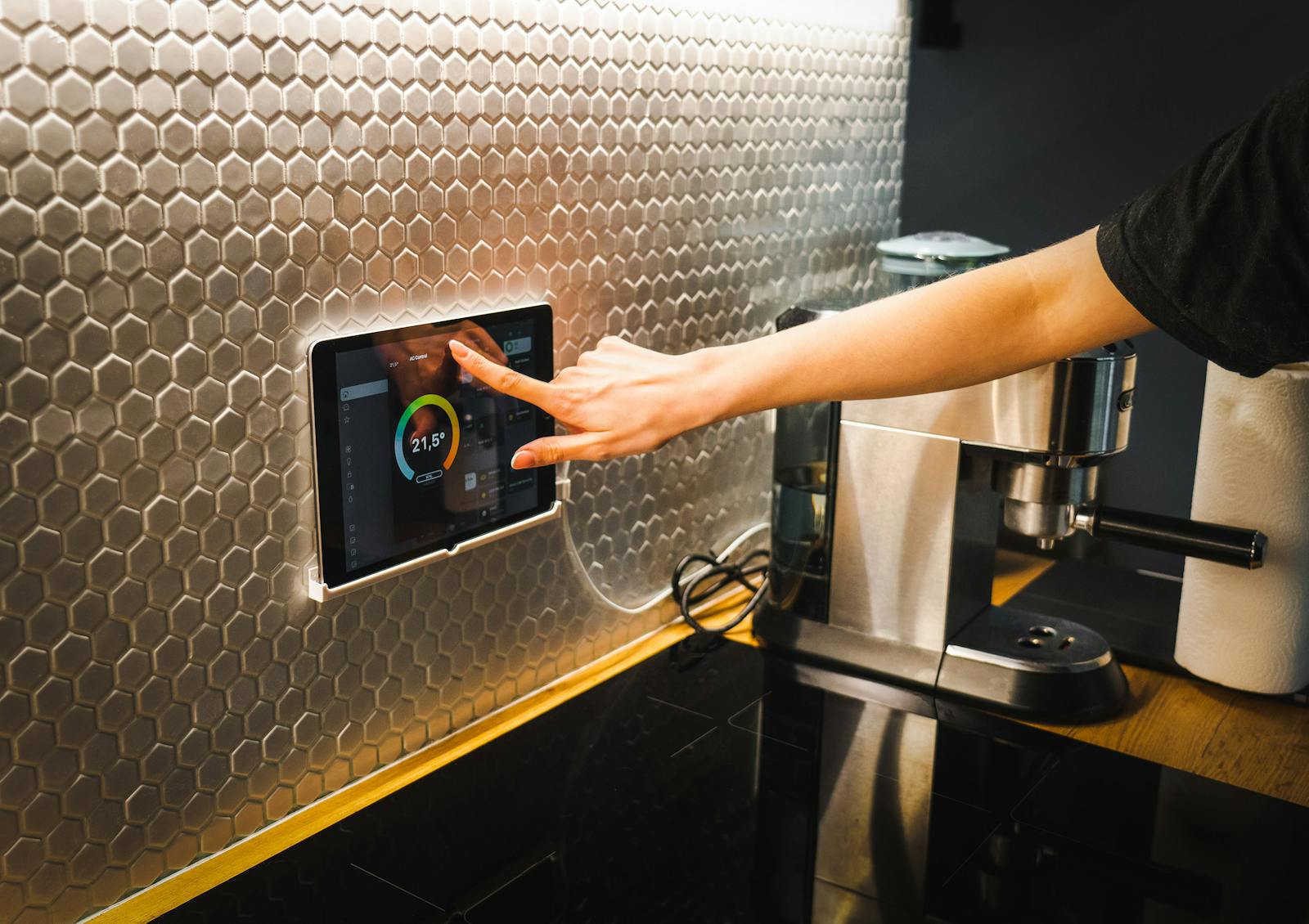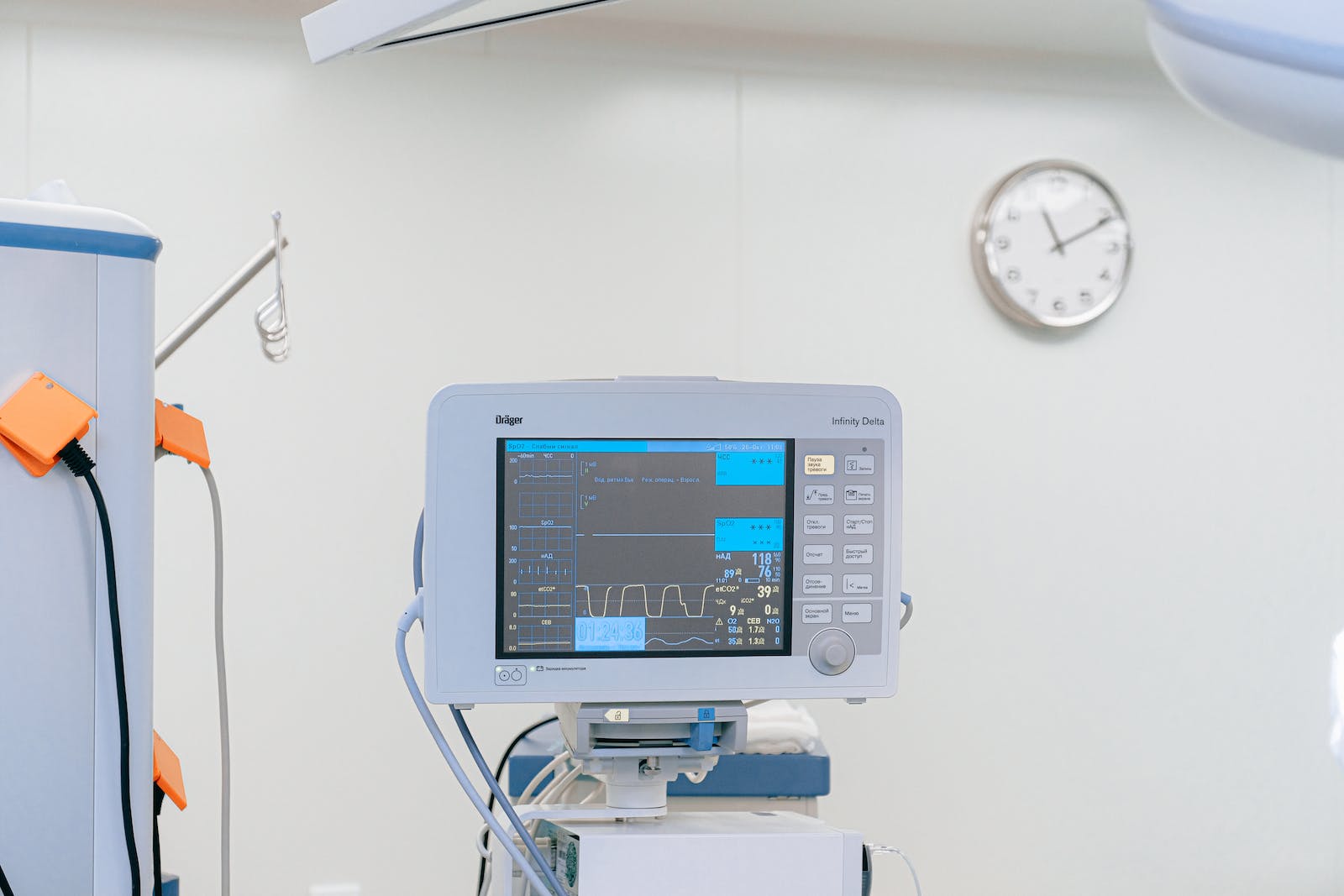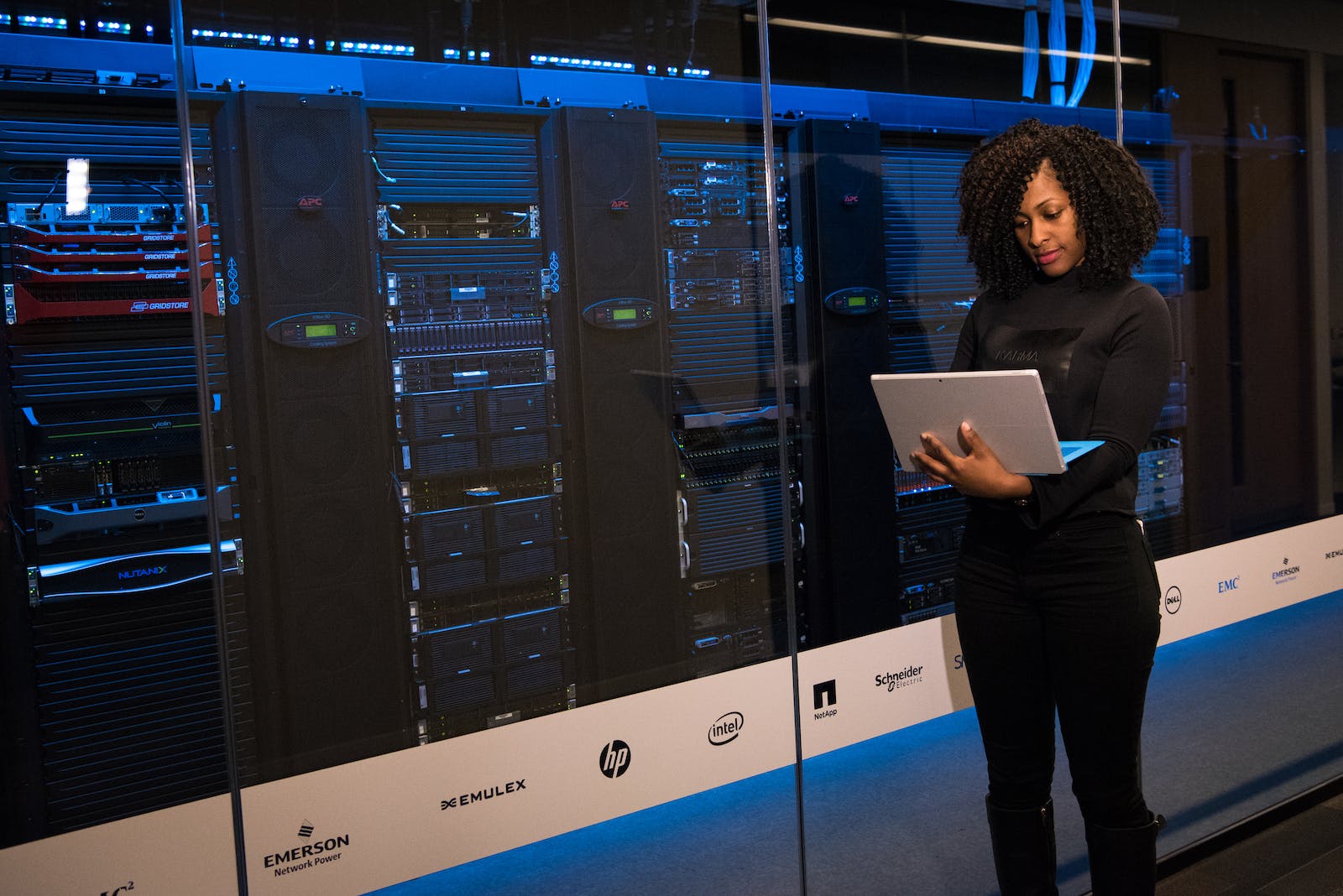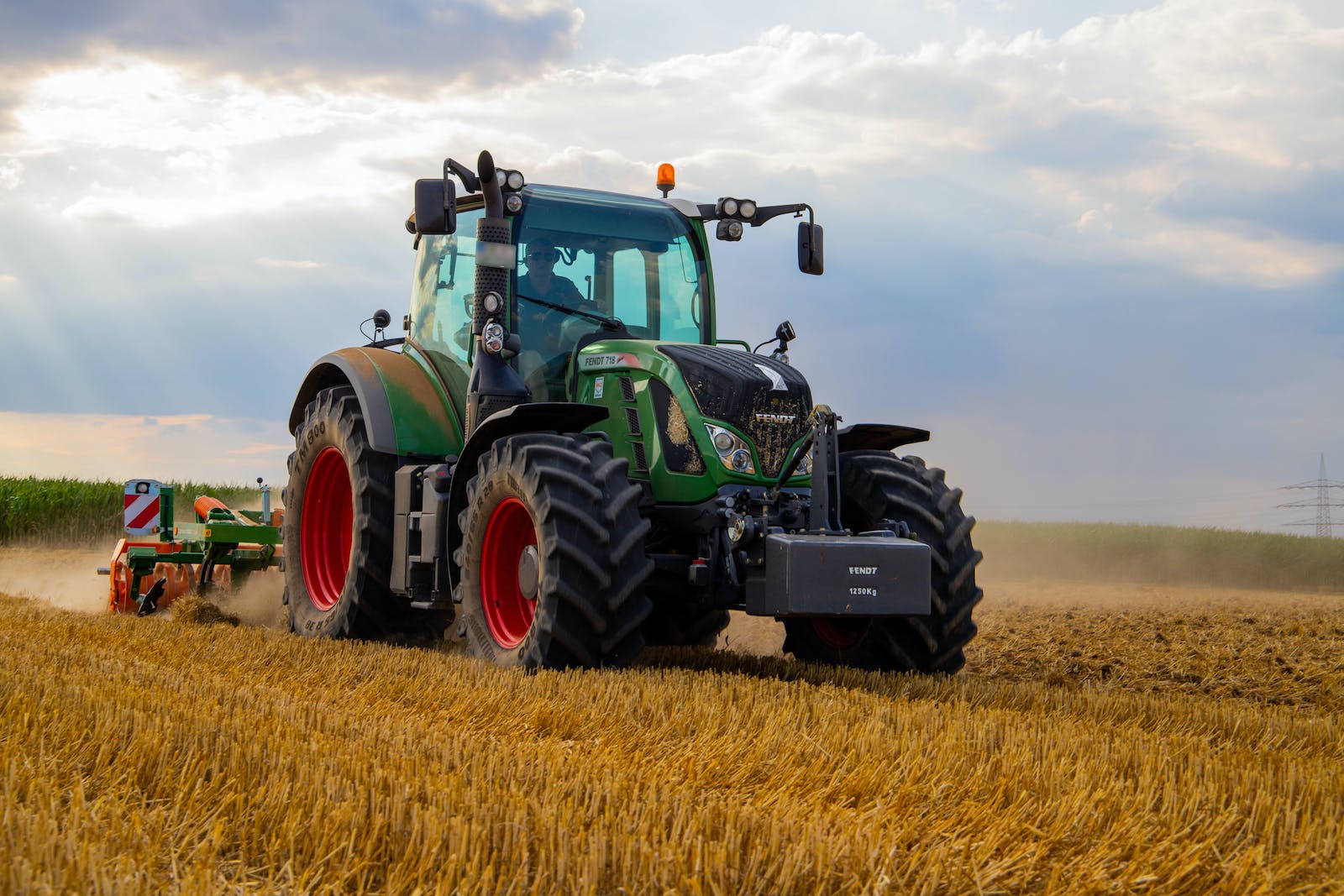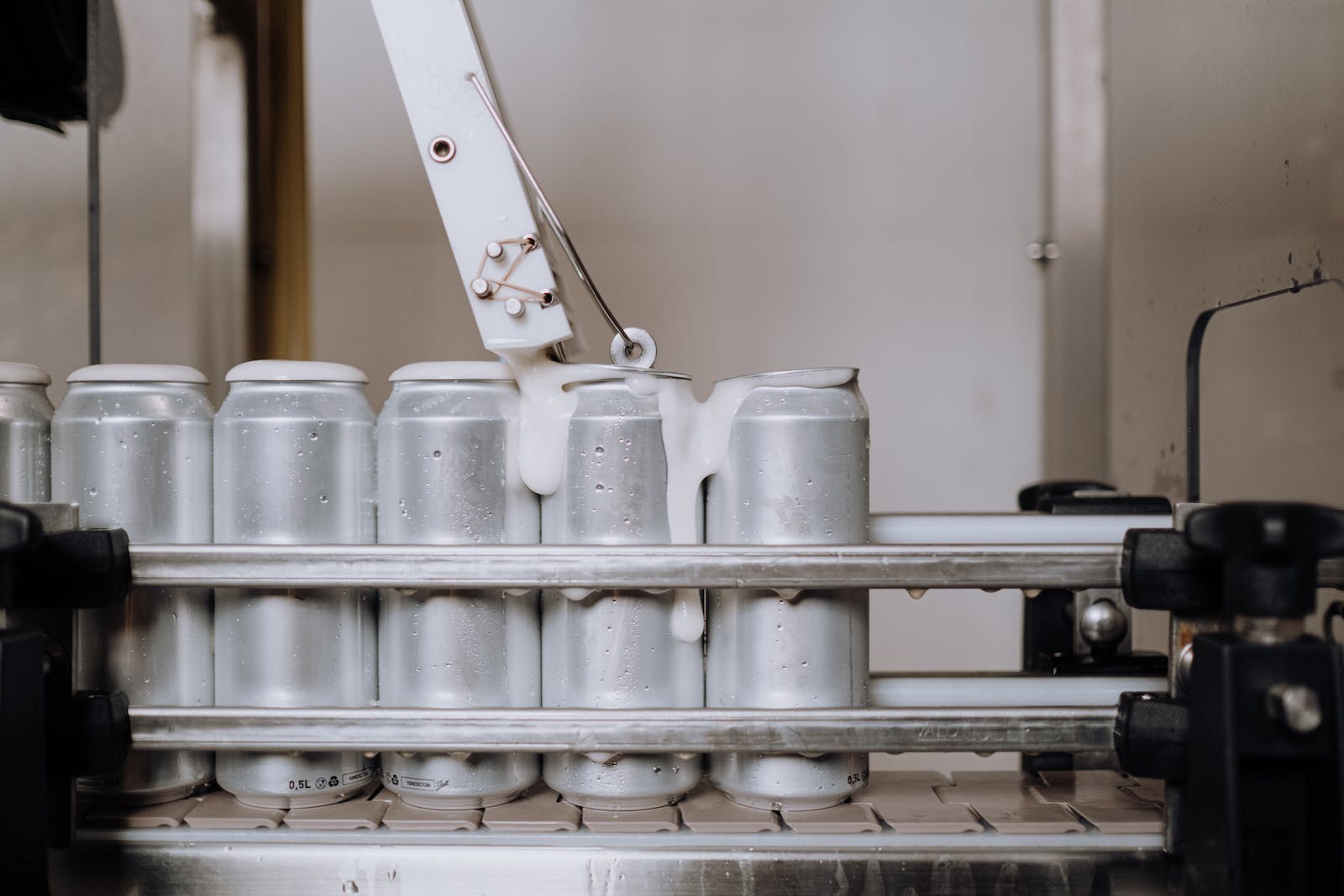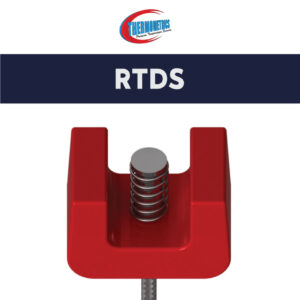
Bearing RTD 4-wire
RTDs provide high-accuracy, stable temperature measurement for industrial, scientific, and medical applications. With platinum, nickel, and copper element options, RTDs offer long-term reliability, superior signal stability, and precision within ±0.1°C.

Bearing RTD 4-wire
RTDs provide high-accuracy, stable temperature measurement for industrial, scientific, and medical applications. With platinum, nickel, and copper element options, RTDs offer long-term reliability, superior signal stability, and precision within ±0.1°C.
RTD Insights
✅ Overall Score
Accuracy
Response Time
Temperature Range
Stability Over Time
Environmental Durability
Vibration Resistance
Chemical Resistance
Long-Distance Signal Accuracy
Compatibility with Data Systems
Contact vs. Non-Contact Measurement
Energy Efficiency / Power Needs
Cost-Effectiveness
Suitability for Extreme Cold
Suitability for Extreme Heat
Food & Medical Compliance
Overheat Protection & Safety
Automotive & Engine Performance
Industrial Process Control Suitability
HVAC & Climate Control
Ease of Installation & Maintenance
Temperature Sensor Overview:
Resistance Temperature Detectors (RTDs) are high-precision temperature sensors that operate based on the predictable change in electrical resistance of metals like platinum, nickel, and copper. Known for their exceptional accuracy, stability, and repeatability, RTDs are widely used in industrial process control, medical equipment, food processing, and HVAC systems.
Compared to thermocouples, RTDs provide better long-term stability and accuracy but have a more limited temperature range (typically up to 850°C). Available in 2-wire, 3-wire, and 4-wire configurations, RTDs minimize resistance errors, ensuring high-precision temperature readings over long cable runs.
✔ High accuracy (±0.1°C to ±0.5°C)
✔ Stable readings over long-term use
✔ Available in PT100, PT1000, and custom configurations
✔ Ideal for laboratory, industrial, and medical applications
Temperature Sensor Specifications:
- Temperature Sensor Type: Thermocouple (J, K, T, E, N, R, S, B)
- Material Type: Stainless Steel, Ceramic, Inconel, Mineral-Insulated
- Accuracy: ±0.5°C to ±2.0°C (varies by type and application)
- Industries: Industrial Process Control, Aerospace, Automotive, Power Generation, Food Processing, Medical, HVAC
Accuracy Levels
Temperature Range
RTDs operate up to 850°C, making them ideal for low-to-medium temperature precision applications, whereas thermocouples handle extreme heat (up to 1800°C).
Response Time
Thin-film RTDs and small-diameter sensors react quickly to temperature changes, while sheathed probes are slower but more stable.
Contact vs. Non-Contact Sensors
RTDs require direct contact for measurement, unlike infrared sensors, which measure temperature remotely.
Signal Stability
RTDs offer consistent resistance-based readings, unlike thermocouples, which require cold-junction compensation.
Power Requirements
RTDs need an external circuit to operate, unlike thermocouples, which self-generate voltage.
Environmental Durability
Stainless steel and ceramic probes withstand harsh industrial conditions, while unprotected RTD elements need shielding in high-humidity environments.
Calibration & Maintenance
Regular calibration ensures accuracy, especially in scientific, industrial, and medical applications.
Insulation & Sheathing
Shielded RTDs reduce electrical interference, ensuring better accuracy and sensor longevity.
Sensor Placement & Installation
Proper positioning prevents mounting errors, airflow exposure, and thermal lag, which could affect readings.
Wire Length & Resistance Errors
4-wire RTDs compensate for lead resistance, ensuring accuracy even over long distances.
Overheat Protection
PTC thermistors provide self-limiting overheating protection, making them ideal for safety-critical applications.
Waterproof & Humidity Resistance
Sealed RTDs and glass-encapsulated thermistors perform well in marine, refrigeration, and high-humidity environments.
Wireless & IoT Integration
Smart RTDs connect via Bluetooth, Wi-Fi, or Zigbee, allowing real-time remote monitoring in industrial automation and smart home applications.
Industry-Specific Sensors
HVAC systems use thermistors, food processing relies on RTDs, and aerospace depends on thermocouples for extreme conditions.
Food & Medical Safety Compliance
FDA-approved stainless steel thermocouples for food and healthcare monitoring.
Extreme Cold Performance
Cryogenic RTDs are ideal for medical storage, aerospace research, and sub-zero applications.
Automotive & Transportation Sensors
Used for engine coolant, oil, exhaust, and battery monitoring, optimizing fuel efficiency and performance.
Industrial Process Control
Essential for chemical plants, power generation, and manufacturing, where precise temperature control is critical.
Protective Enclosures for Longevity
Ceramic sheaths, stainless steel enclosures, and explosion-proof junction boxes extend RTD lifespan in harsh conditions.
Accuracy of RTDs (Resistance Temperature Detectors)
RTDs are the gold standard for high-precision temperature measurement, offering superior accuracy compared to thermocouples and thermistors. With precision levels as high as ±0.1°C to ±0.5°C, RTDs are widely used in industrial automation, scientific research, food processing, and medical applications where consistency and long-term reliability are critical.
Key Factors Affecting RTD Accuracy
✔ Platinum-Based Stability
- PT100 and PT1000 RTDs use platinum elements, known for their highly predictable resistance-temperature relationship, ensuring repeatable and stable readings over time.
✔ Minimal Drift Over Time
- Unlike thermocouples, which experience drift due to oxidation and metal fatigue, RTDs maintain their accuracy for years with proper calibration.
✔ Multi-Wire Configurations for Maximum Precision
- 2-wire RTDs may have slight resistance errors.
- 3-wire RTDs compensate for lead resistance, improving accuracy.
- 4-wire RTDs eliminate resistance errors entirely, providing laboratory-grade precision.
✔ Cold-Junction Compensation Not Required
- Unlike thermocouples, which require cold-junction compensation to correct for environmental influences, RTDs measure temperature directly through resistance, eliminating potential inaccuracies.
✔ Temperature Range Considerations
- RTDs are accurate from -200°C to 850°C, making them ideal for applications where precision is more important than extreme heat tolerance.
- Thermocouples handle higher temperatures (up to 1800°C) but with lower accuracy.
✔ Environmental Protection Improves Accuracy
- Mineral-insulated RTDs prevent electrical noise and interference, maintaining signal integrity.
- Encapsulated RTDs (stainless steel, Teflon, or ceramic sheaths) protect the element, reducing errors from contamination or humidity.
How RTDs Compare to Other Temperature Sensors in Accuracy
| Sensor Type | Accuracy | Long-Term Stability | Drift Over Time | Cold-Junction Compensation |
|---|---|---|---|---|
| RTD (PT100, PT1000) | ±0.1°C to ±0.5°C | Excellent | Minimal | Not Required |
| Thermocouple | ±1.0°C to ±2.0°C | Moderate | Higher (oxidation & wear over time) | Required |
| Thermistor | ±0.05°C to ±0.2°C | Good but sensitive to aging | Some drift | Not Required |
Why RTDs Are the Best Choice for Accuracy
✅ Highest precision for industrial and laboratory applications
✅ Consistent and repeatable measurements with minimal drift
✅ Best choice for applications requiring long-term reliability
✅ Eliminates errors caused by thermocouple cold-junction variations
✅ Used in critical industries where accuracy is essential (pharmaceutical, food, medical, aerospace, etc.)
RTDs are the most trusted sensors for applications where precision, stability, and reliability matter most. With their platinum-based construction, 4-wire compensation, and minimal drift, they provide the highest accuracy available in temperature sensing. 🚀
Response Time of RTDs (Resistance Temperature Detectors)
RTDs offer high-accuracy temperature measurement, but their response speed varies depending on design, material, and environmental conditions. While thin-film RTDs provide fast reaction times, wire-wound and sheathed RTDs may respond more slowly compared to thermocouples due to their thermal mass and insulation.
Key Factors Affecting RTD Response Time
✔ Thin-Film vs. Wire-Wound RTDs
- Thin-film RTDs have a low thermal mass, making them faster to respond to temperature changes.
- Wire-wound RTDs are slightly slower but provide greater long-term stability.
✔ Sheathing & Probe Thickness
- Exposed-element RTDs react more quickly but lack durability in harsh environments.
- Encapsulated RTDs (stainless steel, ceramic, or mineral-insulated sheathing) protect the sensor but slow down response time due to heat transfer lag.
- Thinner probes respond faster than thicker probes, as they require less thermal conduction to stabilize the reading.
✔ Contact with the Heat Source
- Surface-mounted RTDs react quickly to changes in solid surfaces, such as metal pipes and machinery.
- Immersion RTDs (for liquids and gases) require thermal equilibrium, making them slightly slower to stabilize.
✔ Comparison to Thermocouples & Thermistors
- RTDs are slower than thermocouples in most cases due to their resistance-based measurement system.
- Bead-type thermistors react the fastest, but they are less stable over time than RTDs.
How RTDs Compare in Response Time
| Sensor Type | Response Time (General Estimate) | Best For |
|---|---|---|
| Thin-Film RTD | 0.5 – 2 seconds | Surface-mounted & fast-response applications |
| Wire-Wound RTD | 2 – 10 seconds | High-accuracy, stable long-term measurements |
| Thermocouple | 0.1 – 1 second | High-speed industrial applications |
| Thermistor | 0.05 – 1 second | Small-scale & sensitive measurements |
When to Choose RTDs for Response Time
✅ If accuracy is more important than immediate response speed (e.g., industrial process control, food safety, or laboratory applications).
✅ If long-term stability is needed for reliable, repeatable temperature readings.
✅ If using thin-film RTDs, which can provide faster readings without sacrificing accuracy.
RTDs are ideal when accuracy and stability are more critical than immediate reaction speed, making them perfect for industrial, medical, and scientific applications that require consistent, long-term temperature monitoring. 🚀
Temperature Limits of RTDs (Resistance Temperature Detectors)
RTDs are designed for high-accuracy temperature measurement across a moderate to wide temperature range, depending on the sensor material, design, and insulation. While thermocouples can handle extreme heat (up to 1800°C), RTDs excel in low-to-mid-range temperatures, offering stability and precision from -200°C to 850°C.
Key Factors Affecting RTD Temperature Limits
✔ Material Composition
- Platinum RTDs (PT100, PT1000, etc.) are the most common and can measure -200°C to 850°C while maintaining high accuracy.
- Nickel RTDs are limited to -80°C to 300°C but offer better corrosion resistance in certain applications.
- Copper RTDs are typically used in low-temperature applications (up to 150°C) due to their lower resistance stability.
✔ Sheathing & Insulation
- Bare RTDs are sensitive to oxidation and environmental damage, limiting their lifespan at high temperatures.
- Encapsulated RTDs (stainless steel, ceramic, or mineral-insulated sheaths) improve temperature resistance and durability.
✔ Wire-Wound vs. Thin-Film RTDs
- Wire-wound RTDs provide better stability at higher temperatures (up to 850°C) but are more fragile.
- Thin-film RTDs can handle rapid temperature changes but may degrade faster in prolonged high-heat conditions.
✔ Cryogenic Applications
- Platinum RTDs (PT100, PT1000) are ideal for cryogenic environments, accurately measuring temperatures as low as -200°C, making them useful for medical storage, aerospace, and scientific research.
✔ Comparison to Thermocouples & Thermistors
- RTDs outperform thermistors in both temperature range and stability, as thermistors typically operate from -50°C to 150°C.
- Thermocouples handle much higher temperatures (up to 1800°C for Type B, R, S thermocouples), making them the better choice for extreme heat applications.
RTD Temperature Range vs. Other Sensors
| Sensor Type | Temperature Range | Best For |
|---|---|---|
| RTD (PT100, PT1000) | -200°C to 850°C | Industrial, scientific, and medical applications requiring precision |
| Nickel RTD | -80°C to 300°C | Corrosion-resistant applications |
| Copper RTD | Up to 150°C | Low-temperature HVAC and industrial processes |
| Thermocouple (Type K, N, etc.) | -200°C to 1260°C | Industrial, high-heat applications |
| Thermocouple (Type B, R, S) | 0°C to 1800°C | Extreme heat applications (furnaces, aerospace, foundries) |
| Thermistor | -50°C to 150°C | Low-temperature, high-sensitivity applications |
When to Choose RTDs for Temperature Limits
✅ For high-precision measurements in moderate temperature ranges (-200°C to 850°C).
✅ For applications requiring cryogenic accuracy (medical, aerospace, and laboratory use).
✅ For environments where long-term stability is more important than extreme heat resistance.
✅ When consistent and repeatable temperature readings are critical.
RTDs are the preferred choice for precision monitoring in low-to-mid-temperature applications, ensuring stable, repeatable, and accurate readings across industrial, scientific, and medical environments. 🚀
Contact vs. Non-Contact RTDs (Resistance Temperature Detectors)
RTDs are contact-based temperature sensors, meaning they require direct physical contact with a surface, liquid, or gas to measure temperature accurately. Unlike infrared (IR) and thermal imaging sensors, which detect heat radiation remotely, RTDs rely on resistance changes in the sensing element to provide precise temperature readings.
Contact RTDs (Direct Measurement)
✔ How They Work:
- RTDs measure temperature by making direct contact with the object or environment they are monitoring.
- The platinum sensing element (PT100, PT1000, etc.) changes resistance based on temperature variations.
✔ Best For:
- Industrial automation & process control (ensuring stable temperatures in machinery and production).
- HVAC systems (monitoring airflow and system efficiency).
- Medical & pharmaceutical applications (ensuring precise temperature control in storage and sterilization).
- Food & beverage processing (FDA-compliant RTDs for safe cooking, cooling, and refrigeration).
✔ Advantages:
✅ Highly accurate (±0.1°C to ±0.5°C), making them ideal for precision applications.
✅ Long-term stability, ensuring consistent measurements over time.
✅ Available in various configurations (immersion probes, surface-mounted sensors, and flexible RTDs).
✔ Limitations:
🔸 Slower response time compared to thermocouples, especially with sheathed RTDs.
🔸 Must be in direct contact with the target, which may be challenging for moving or inaccessible objects.
Non-Contact Temperature Measurement (Infrared vs. RTDs)
✔ Infrared (IR) Sensors & Thermal Cameras:
- Use infrared radiation to measure temperature remotely, with no direct contact.
- Ideal for applications where physical contact is unsafe, impractical, or where objects are moving.
✔ Best For:
- Monitoring high-speed machinery where direct contact is not possible.
- Measuring very high temperatures (furnaces, kilns, molten metals, etc.).
- Hazardous or high-voltage environments where physical probes could be damaged.
✔ Advantages of Non-Contact Sensors Over RTDs:
✅ Faster response time (milliseconds) compared to RTDs.
✅ Safer for extreme heat or high-voltage applications.
✅ Can measure moving parts and hard-to-reach areas.
✔ Limitations:
🔸 Less precise than RTDs in controlled environments.
🔸 Affected by factors like surface emissivity, reflections, and environmental interference (dust, fog, etc.).
🔸 Cannot measure internal temperatures (e.g., inside machinery, liquids, or food products).
When to Choose RTDs vs. Non-Contact Sensors
| Feature | RTDs (Contact Sensors) | Infrared Sensors (Non-Contact) |
|---|---|---|
| Accuracy | ±0.1°C to ±0.5°C | ±1.0°C to ±2.0°C |
| Response Time | 0.5 – 10 seconds | Milliseconds |
| Best for | Precision & stability | Fast-moving or hazardous objects |
| Temperature Range | -200°C to 850°C | Up to 3000°C (depends on IR sensor type) |
| Emissivity Factors | Not affected | Can cause measurement errors |
| Environmental Factors | Not affected | Dust, fog, and reflections impact readings |
| Physical Contact Required? | Yes | No |
Which One Should You Use?
✅ Choose RTDs if you need:
- Highly accurate, stable, and repeatable temperature measurements.
- Direct measurement of liquids, gases, or solid surfaces.
- Precise monitoring in industrial, medical, or food processing applications.
✅ Choose Infrared Sensors if you need:
- Instant temperature readings from a distance.
- Non-contact measurement for moving objects or hazardous environments.
- High-temperature readings where physical probes cannot survive.
While infrared sensors provide the convenience of remote monitoring, RTDs remain the industry standard for precision and long-term stability, ensuring accurate contact-based temperature measurement across multiple industries. 🚀
Durability of RTDs (Resistance Temperature Detectors)
RTDs are highly durable temperature sensors, built for long-term stability and precision in demanding industrial, medical, and scientific applications. Their durability depends on sensor construction, sheath material, insulation, and environmental exposure. While RTDs are more fragile than thermocouples in extreme conditions, they excel in consistent performance, corrosion resistance, and long-term reliability.
Key Factors Affecting RTD Durability
✔ Sheath Material & Protection
- Stainless Steel – Highly resistant to corrosion, moisture, and physical wear, making it ideal for industrial and food processing applications.
- Inconel & Nickel Alloys – Provide high-temperature resistance and oxidation protection, extending RTD lifespan in chemical and aerospace industries.
- Ceramic Sheathing – Offers excellent heat resistance, though it is more brittle and prone to mechanical stress.
✔ Mineral-Insulated (MI) RTDs
- Superior durability due to high-density insulation, preventing moisture ingress and mechanical damage.
- Highly flexible while maintaining protection against extreme conditions.
✔ Vibration & Mechanical Resistance
- Armored RTDs and mineral-insulated designs withstand high-vibration environments in automotive, aerospace, and heavy machinery.
- Thin-film RTDs are more fragile but offer fast response times for applications requiring rapid detection.
✔ Chemical & Moisture Resistance
- Teflon-coated RTDs provide protection against acids, oils, and industrial chemicals, making them ideal for chemical processing plants.
- Sealed RTDs prevent moisture damage, ensuring reliable performance in marine, refrigeration, and HVAC environments.
✔ Long-Term Stability & Accuracy
- RTDs maintain accuracy better than thermocouples over time, with minimal drift when properly protected.
- Regular calibration ensures long-term precision, particularly in scientific and medical applications.
✔ Operating Environment Considerations
- Extreme heat (above 850°C) can degrade RTDs, requiring alternative high-temperature sensors like thermocouples.
- High-vibration or mechanical stress environments may require reinforced or MI-sheathed RTDs.
How RTDs Compare in Durability
| Feature | RTDs (Resistance Temperature Detectors) | Thermocouples |
|---|---|---|
| Long-Term Stability | ✅ Excellent (minimal drift) | 🔸 Moderate (degrades over time) |
| Corrosion Resistance | ✅ High (stainless steel, Inconel, Teflon-coated options available) | 🔸 Depends on material type |
| Vibration Resistance | 🔸 Good (best with MI or armored RTDs) | ✅ Better (mineral-insulated thermocouples withstand higher vibrations) |
| Chemical Resistance | ✅ Very good (coated and sealed RTDs available) | 🔸 Good (some require protective coatings) |
| Temperature Tolerance | 🔸 Moderate (-200°C to 850°C) | ✅ Higher (up to 1800°C) |
| Moisture Resistance | ✅ Excellent (sealed RTDs for high-humidity environments) | 🔸 Moderate (bare-wire thermocouples degrade faster) |
When to Choose RTDs for Durability
✅ If long-term accuracy and minimal drift are critical (industrial process control, medical devices, food safety).
✅ If corrosion resistance is required (chemical processing, marine environments, HVAC applications).
✅ If you need moisture-resistant sensors for refrigeration, HVAC, or extreme humidity.
✅ If using armored or mineral-insulated RTDs, which provide excellent vibration resistance in automotive and aerospace applications.
RTDs are built for long-lasting precision, corrosion resistance, and industrial durability, making them a reliable choice for applications where accuracy and stability are more important than extreme heat tolerance. 🚀
Long-Term Accuracy of RTDs (Resistance Temperature Detectors)
RTDs are one of the most stable and accurate temperature sensors over time, making them the preferred choice for applications that require consistent, repeatable, and precise temperature measurements. Unlike thermocouples, which can drift due to oxidation and material degradation, RTDs maintain long-term accuracy with minimal drift, ensuring reliable performance for years.
Key Factors Contributing to RTD Long-Term Accuracy
✔ Minimal Drift Over Time
- RTDs have significantly lower drift compared to thermocouples, maintaining accuracy over years of operation.
- Platinum RTDs (PT100, PT1000) are the most stable, with a repeatable resistance-temperature relationship.
- Proper installation and calibration further enhance long-term accuracy.
✔ Stable Electrical Resistance
- RTDs operate based on the predictable change in resistance of the sensing element, making them resistant to environmental influences like electromagnetic interference (EMI) and signal loss over long distances.
✔ Multi-Wire Compensation for Maximum Precision
- 4-wire RTDs eliminate resistance errors, ensuring stable, long-distance accuracy over time.
- 3-wire RTDs provide excellent compensation, commonly used in industrial process control.
- 2-wire RTDs can experience slight resistance errors but are still more stable than thermocouples.
✔ Superior Material Stability
- Platinum elements (PT100, PT1000) do not degrade easily, maintaining high-accuracy readings for extended periods.
- Nickel and copper RTDs have more limited temperature ranges and slightly higher drift but still outperform thermocouples in long-term precision.
✔ Protective Sheathing for Environmental Durability
- Mineral-insulated RTDs and stainless steel sheathing prevent external contamination, reducing sensor degradation.
- Glass-encapsulated and sealed RTDs resist moisture and oxidation, keeping readings stable over time.
✔ Regular Calibration Maintains Long-Term Accuracy
- While RTDs are naturally low-drift sensors, annual or bi-annual calibration helps maintain extreme precision, especially in high-precision industries like pharmaceuticals and aerospace.
How RTDs Compare in Long-Term Accuracy
| Feature | RTDs (Resistance Temperature Detectors) | Thermocouples | Thermistors |
|---|---|---|---|
| Long-Term Stability | ✅ Excellent (minimal drift over years) | 🔸 Moderate (drifts over time) | 🔸 Good but sensitive to aging |
| Accuracy Over Time | ✅ ±0.1°C to ±0.5°C | 🔸 ±1.0°C to ±2.0°C | ✅ ±0.05°C to ±0.2°C |
| Drift Over Time | ✅ Minimal (platinum RTDs remain highly accurate) | 🔸 High (oxidation, material degradation) | 🔸 Moderate (sensitive to environmental changes) |
| Need for Calibration | 🔸 Low (1–2 years recommended) | ✅ Higher (frequent calibration required) | ✅ Higher (due to sensitivity to humidity and aging) |
| Environmental Protection Needed? | ✅ Minimal (sealed RTDs last longer) | ✅ High (thermocouples degrade faster in harsh environments) | ✅ High (thermistors are fragile and sensitive to humidity) |
Why RTDs Are the Best Choice for Long-Term Accuracy
✅ Minimal drift compared to thermocouples, ensuring long-term precision.
✅ Stable resistance-based measurements that are not affected by oxidation.
✅ Platinum elements (PT100, PT1000) offer excellent material stability for years.
✅ Ideal for industrial process control, medical applications, and laboratory use where accuracy is critical.
✅ Available in 3-wire and 4-wire configurations to compensate for lead resistance over long cable runs.
RTDs are the most reliable and stable temperature sensors for long-term applications, ensuring repeatable accuracy with minimal maintenance and calibration requirements. 🚀
Key Industries Using RTDs (Resistance Temperature Detectors)
RTDs are widely used across industries that require precision, stability, and long-term accuracy for temperature monitoring. With their high accuracy (±0.1°C to ±0.5°C), minimal drift, and durability, RTDs are the preferred choice for industrial, medical, scientific, and environmental applications.
📌 Industries Where RTDs Are Essential
1️⃣ Oil & Gas
✔ Pipeline and refinery temperature monitoring
✔ Ensuring equipment safety in drilling and extraction
✔ Measuring process temperatures in LNG and petroleum operations
2️⃣ Heat Treating
✔ Precision monitoring for metal hardening, annealing, and forging
✔ Maintaining stable furnace and kiln temperatures
3️⃣ Metal Processing
✔ Accurate monitoring of molten metal, rolling mills, and cooling processes
✔ Temperature control in steel, aluminum, and foundry operations
4️⃣ Chemical Industry
✔ Process control for chemical reactions, storage tanks, and heat exchangers
✔ Corrosion-resistant RTDs for acid and solvent exposure
5️⃣ Plastics Industry
✔ Temperature monitoring for extrusion, molding, and polymer processing
✔ Ensuring quality control in plastic manufacturing
6️⃣ Aerospace & Defense
✔ Monitoring jet engines, space vehicles, and test environments
✔ High-precision thermal management for avionics and spacecraft
7️⃣ Agriculture Industry
✔ Climate control for greenhouses, livestock monitoring, and soil temperature
✔ Optimizing crop growth conditions with real-time temperature data
8️⃣ Automotive Industry
✔ Monitoring coolant, exhaust gas, and battery temperatures
✔ Temperature sensors for electric vehicle (EV) thermal management
9️⃣ Consumer Electronics
✔ Preventing overheating in smartphones, laptops, and battery systems
✔ Precision monitoring for circuit boards and power components
🔟 Energy & Power Generation
✔ Temperature sensors for nuclear, geothermal, and solar energy production
✔ Monitoring turbine and transformer heat levels in power plants
1️⃣1️⃣ Food & Beverage Industry
✔ FDA-compliant RTDs for food safety in cooking, refrigeration, and processing
✔ Temperature monitoring in breweries, dairy plants, and cold storage
1️⃣2️⃣ HVAC (Heating, Ventilation, & Air Conditioning)
✔ Maintaining indoor climate control for efficiency and comfort
✔ Energy-efficient temperature sensors for smart building automation
1️⃣3️⃣ Industrial Automation & Process Control
✔ Real-time monitoring of machinery, production lines, and safety systems
✔ Integration with SCADA, PLCs, and IoT networks for automated process control
1️⃣4️⃣ Medical & Healthcare
✔ Temperature monitoring in patient care, laboratory research, and sterilization
✔ Used in cryogenic storage for vaccines and biological samples
1️⃣5️⃣ Pharmaceutical Industry
✔ Ensuring precise temperature control in drug manufacturing and storage
✔ Compliance with regulatory standards (FDA, GMP, HACCP)
Why RTDs Are the Preferred Choice in These Industries
✅ Superior accuracy (±0.1°C to ±0.5°C) for precise monitoring
✅ Long-term stability with minimal drift over time
✅ Corrosion-resistant and durable for harsh industrial environments
✅ Seamless integration with modern automation systems (PLC, SCADA, IoT)
✅ FDA and HACCP compliance for food, medical, and pharmaceutical industries
RTDs are the most reliable choice for temperature monitoring in critical applications across multiple industries, ensuring safety, efficiency, and regulatory compliance in temperature-sensitive environments. 🚀
Smart & Wireless RTDs (Resistance Temperature Detectors)
As industries move toward automation and IoT-based monitoring, smart and wireless RTDs have become essential for real-time temperature tracking, remote access, and predictive maintenance. These advanced RTDs eliminate the need for wired setups, reducing installation complexity, maintenance costs, and system downtime while improving data accuracy and accessibility.
📌 Key Features of Smart & Wireless RTDs
✔ Bluetooth & Wi-Fi Connectivity
- Wireless RTDs use Bluetooth, Wi-Fi, or LoRaWAN to transmit real-time temperature data to mobile apps, cloud dashboards, and industrial control systems.
- Ideal for remote temperature monitoring in industrial, medical, and environmental applications.
✔ IoT & Cloud Integration
- Seamless connection with SCADA, PLCs, and industrial IoT (IIoT) platforms for real-time tracking.
- Enables automated alerts and predictive maintenance, reducing equipment failures.
- Cloud-based monitoring allows global access to temperature readings, improving operational efficiency.
✔ Battery-Powered & Energy-Efficient Designs
- Many smart RTDs are battery-operated or use low-power wireless protocols, eliminating the need for wired power sources.
- Long battery life ensures continuous operation in remote locations.
✔ Industrial-Grade Wireless Reliability
- Uses secure transmission protocols (encrypted Bluetooth, Zigbee, or Wi-Fi) to ensure reliable and interference-free data communication.
- Available in rugged, high-temperature enclosures for harsh environments.
✔ Mobile & Web-Based Monitoring
- Temperature data can be viewed in real-time via mobile apps, web dashboards, or industrial control panels.
- Enables remote access for industrial, laboratory, and field applications.
📌 Applications of Smart & Wireless RTDs
🔹 Manufacturing & Industrial Process Control – Enables real-time tracking of production temperatures, reducing downtime.
🔹 Automotive & Aerospace – Wireless RTDs optimize engine testing, battery monitoring, and climate control.
🔹 Food & Beverage – HACCP-compliant wireless RTDs monitor cooking, storage, and refrigeration temperatures.
🔹 Energy & Power Plants – IoT-enabled RTDs improve efficiency in nuclear, solar, and geothermal plants.
🔹 Medical & Pharmaceutical – Smart RTDs ensure precise cryogenic storage and drug manufacturing compliance.
🔹 HVAC & Smart Buildings – Wireless RTDs enhance automated climate control and energy efficiency.
📌 Why Choose Smart & Wireless RTDs?
✅ No complex wiring – Easier installation and flexibility.
✅ Real-time remote monitoring – Ideal for industrial, medical, and energy applications.
✅ IoT integration for predictive maintenance, reducing downtime and increasing efficiency.
✅ Great for inaccessible or high-risk environments, such as power plants, aerospace, and hazardous locations.
With smart and wireless RTDs, industries can achieve better temperature control, improved safety, and lower maintenance costs, making them the future of precision temperature sensing. 🚀
Blog
Resistance Elements
Resistance Elements http://temperaturesensors.us/wp-content/themes/blade/images/empty/thumbnail.jpg 150 150 Thermometrics Corporation //temperaturesensors.us/wp-content/uploads/2021/09/TMC-LOGO-2018_1.pngTemperature Transmitters
Temperature Transmitters http://temperaturesensors.us/wp-content/themes/blade/images/empty/thumbnail.jpg 150 150 Thermometrics Corporation //temperaturesensors.us/wp-content/uploads/2021/09/TMC-LOGO-2018_1.pngIntro to Thermowells
Intro to Thermowells http://temperaturesensors.us/wp-content/themes/blade/images/empty/thumbnail.jpg 150 150 Thermometrics Corporation //temperaturesensors.us/wp-content/uploads/2021/09/TMC-LOGO-2018_1.pngWhy is 3A Sanitary Temperature Measurement Important?
Why is 3A Sanitary Temperature Measurement Important? http://temperaturesensors.us/wp-content/themes/blade/images/empty/thumbnail.jpg 150 150 Thermometrics Corporation //temperaturesensors.us/wp-content/uploads/2021/09/TMC-LOGO-2018_1.pngPipe Flange
Pipe Flange http://temperaturesensors.us/wp-content/themes/blade/images/empty/thumbnail.jpg 150 150 Thermometrics Corporation //temperaturesensors.us/wp-content/uploads/2021/09/TMC-LOGO-2018_1.pngFlange Industries
Flange Industries http://temperaturesensors.us/wp-content/themes/blade/images/empty/thumbnail.jpg 150 150 Thermometrics Corporation //temperaturesensors.us/wp-content/uploads/2021/09/TMC-LOGO-2018_1.pngSelecting A Wire
Selecting A Wire http://temperaturesensors.us/wp-content/themes/blade/images/empty/thumbnail.jpg 150 150 Thermometrics Corporation //temperaturesensors.us/wp-content/uploads/2021/09/TMC-LOGO-2018_1.pngWeld Pad Temperature Sensors In Depth
Weld Pad Temperature Sensors In Depth http://temperaturesensors.us/wp-content/themes/blade/images/empty/thumbnail.jpg 150 150 Thermometrics Corporation //temperaturesensors.us/wp-content/uploads/2021/09/TMC-LOGO-2018_1.pngTubeskin Thermocouple In Depth
Tubeskin Thermocouple In Depth http://temperaturesensors.us/wp-content/themes/blade/images/empty/thumbnail.jpg 150 150 Thermometrics Corporation //temperaturesensors.us/wp-content/uploads/2021/09/TMC-LOGO-2018_1.pngThermocouple Type K In Depth
Thermocouple Type K In Depth http://temperaturesensors.us/wp-content/themes/blade/images/empty/thumbnail.jpg 150 150 Thermometrics Corporation //temperaturesensors.us/wp-content/uploads/2021/09/TMC-LOGO-2018_1.pngReviews of RTDs
https://huntfish.site/1CReviewBuilder?%domain%
Instantly Create Full Product Reviews, Descriptions, Bullets, SM Content, Hashtags, Emails & Sell Your Own Software – In Minutes
– Even If You’re A Complete Beginner.
https://huntfish.site/1CReviewBuilder?temperaturesensors.us
You are getting this email
as we believe
our offer
might be of interest to you.
If you don’t want to receive
any more messages from us,
please click here to
unsubscribe:
https://huntfish.site/unsub?domain=temperaturesensors.us
Address: Address: 3939 Pinksterbloemstraat 101, NH 1562 Ax
Looking out for you, Jerilyn Pappas.
https://ow.ly/qjtY50XLvt7
Attract the right audience to your site with our AI-driven traffic solution, offering better results than paid ads at a fraction of the price. Get started today.
https://ow.ly/HXUu50XLvC1
https://ow.ly/cktg50XGmRO
Maximize your website’s potential with our AI-driven traffic service, providing targeted visitors for much less than paid ad platforms. Start now and see the impact.
https://ow.ly/cktg50XGmRO
https://ow.ly/pRtt50XJ6M4
Attract the right audience to your site with our AI-driven traffic solution, offering better results than paid ads at a fraction of the price. Get started today.
https://ow.ly/kL3L50XJ6Mg
https://ow.ly/NUiO50XHtuX
Grow your site’s audience with our AI-driven traffic service, significantly cheaper than paid ad platforms. Contact us to explore the benefits.
https://ow.ly/LyJV50XHtwe
